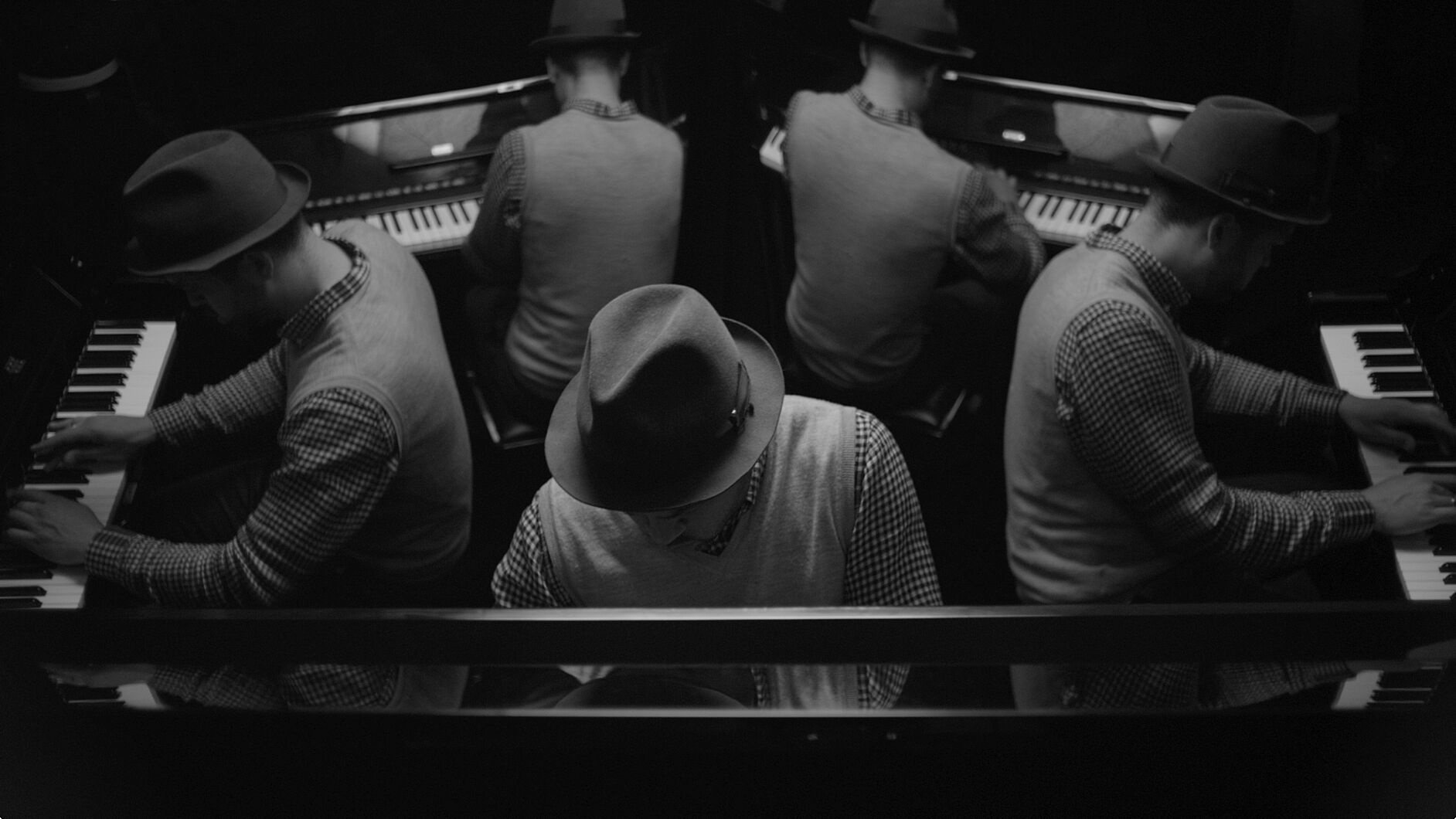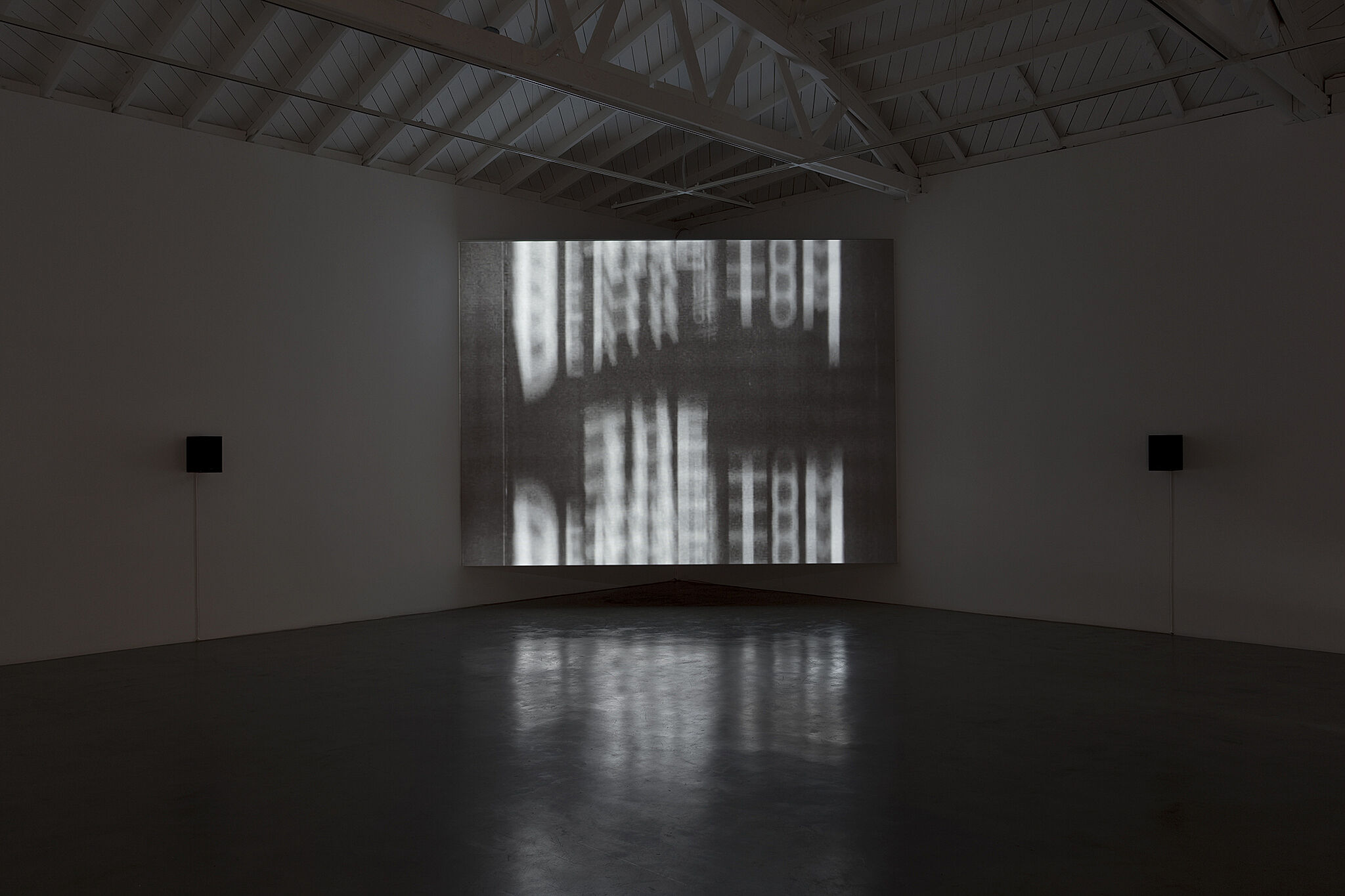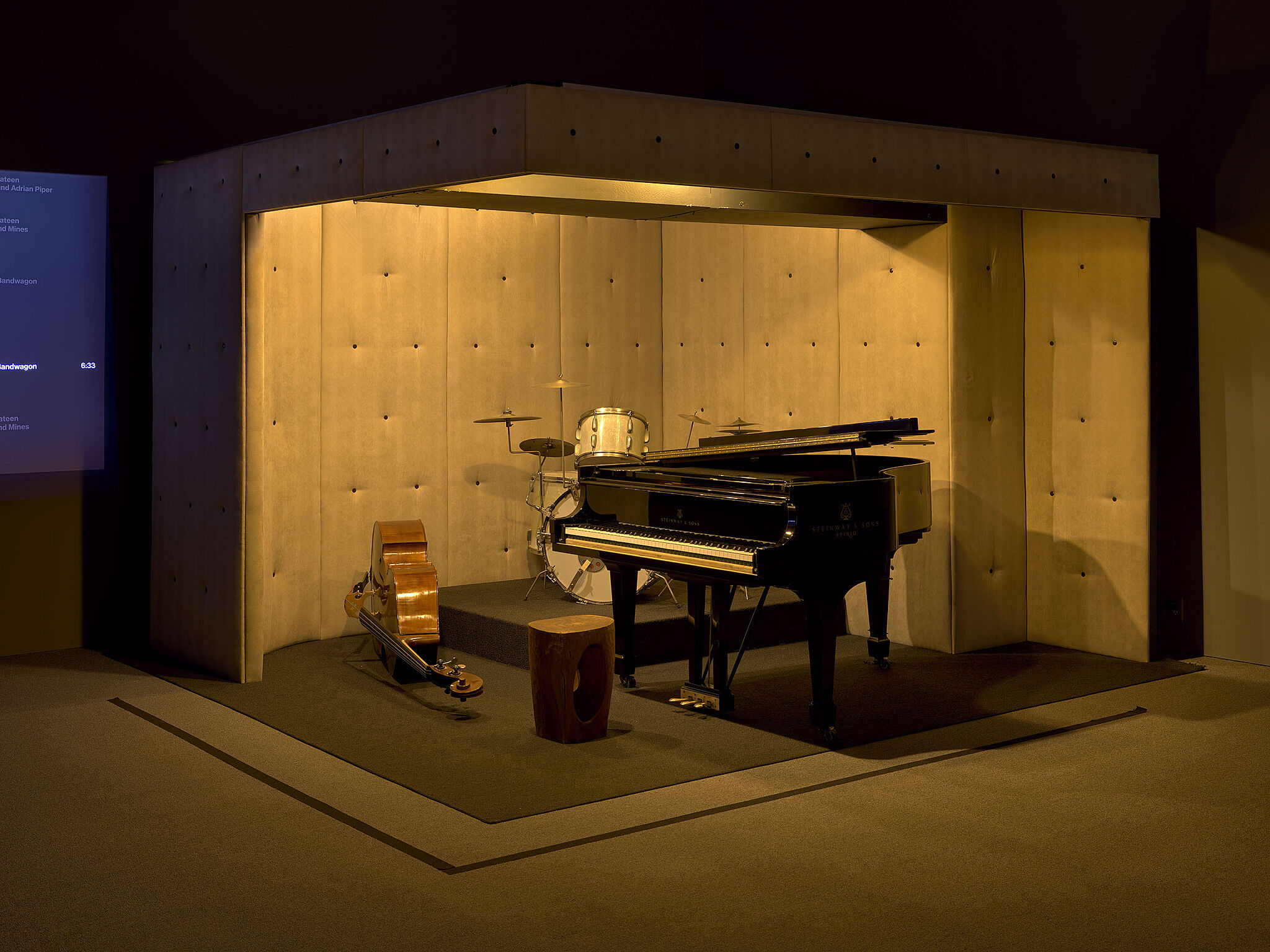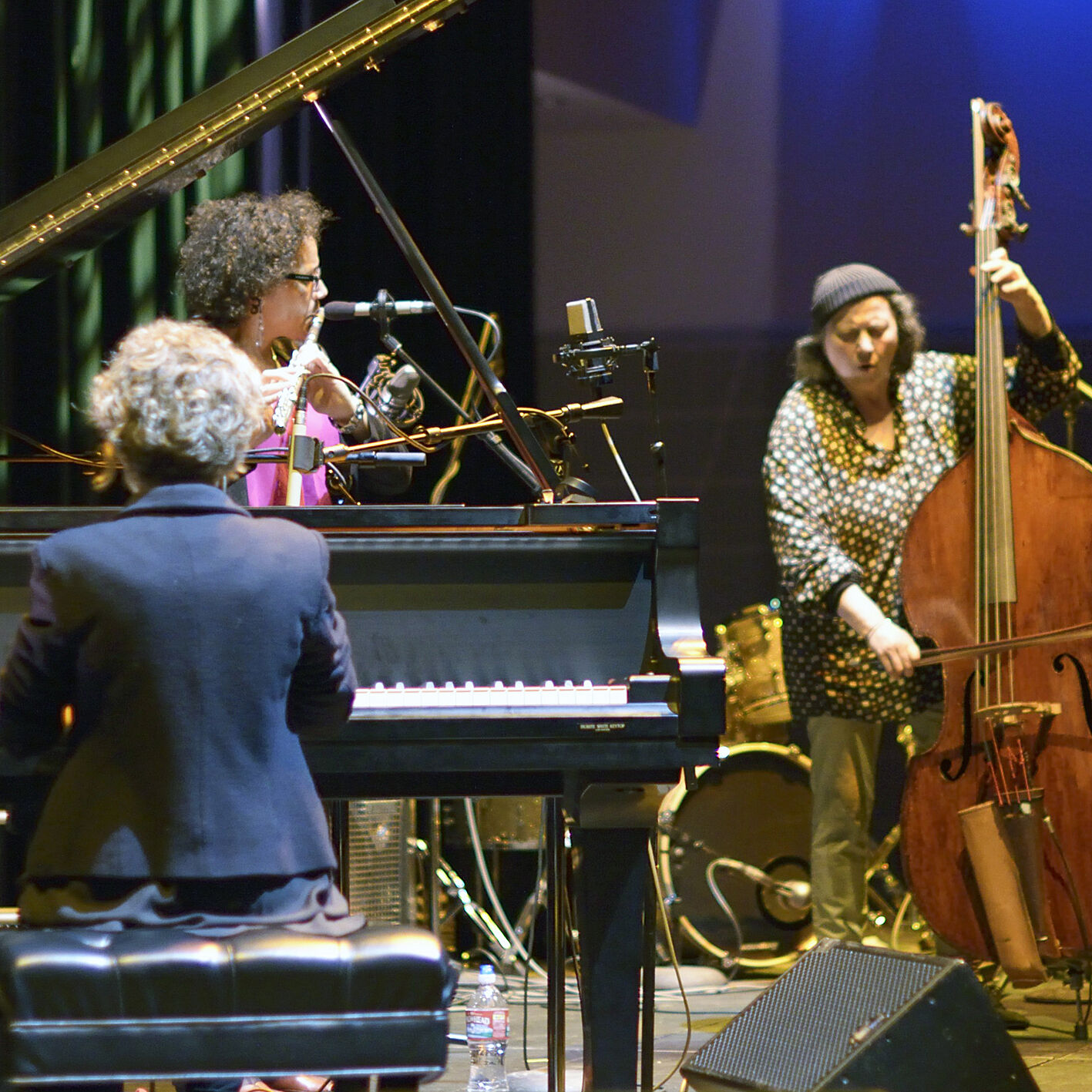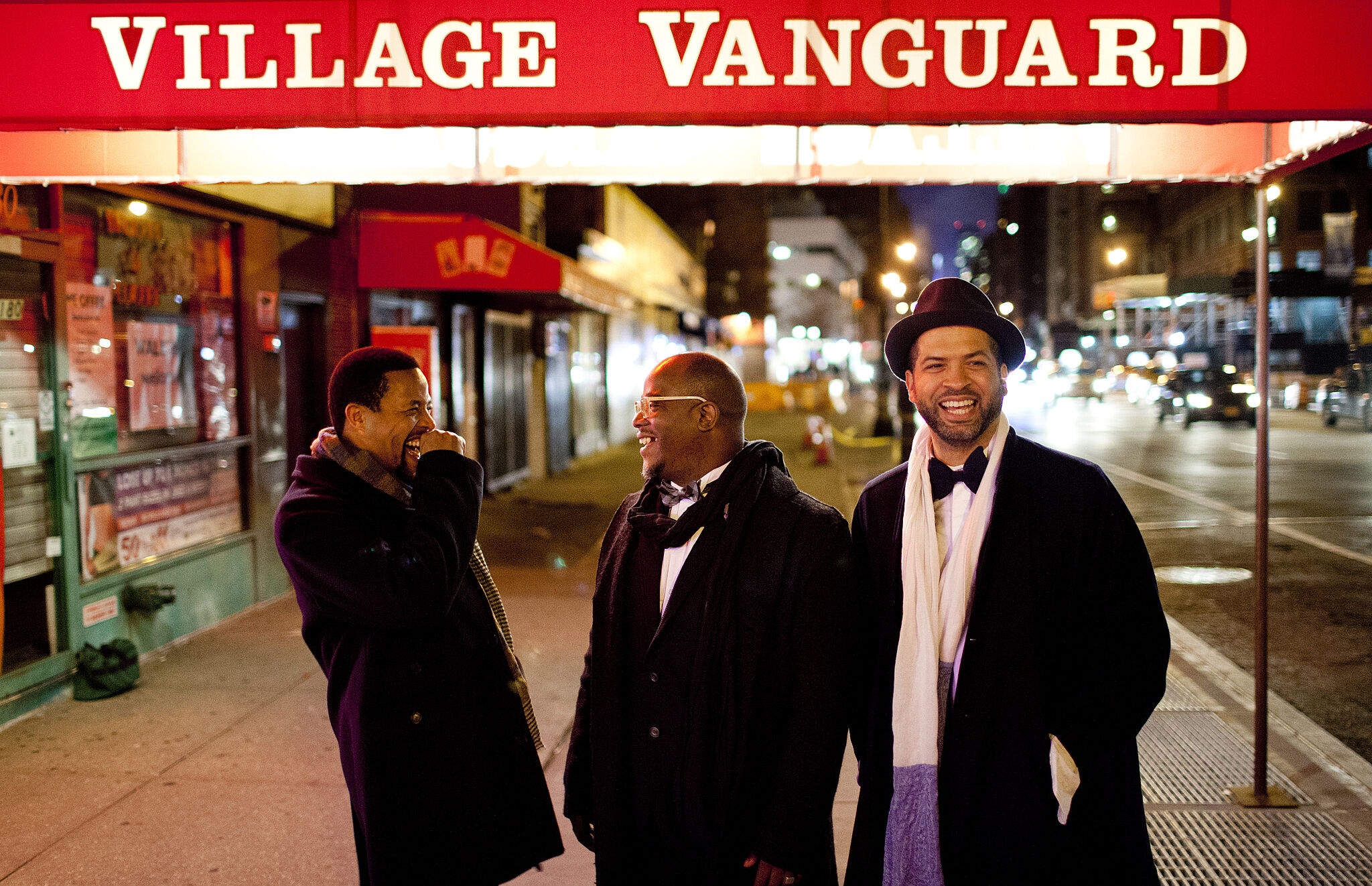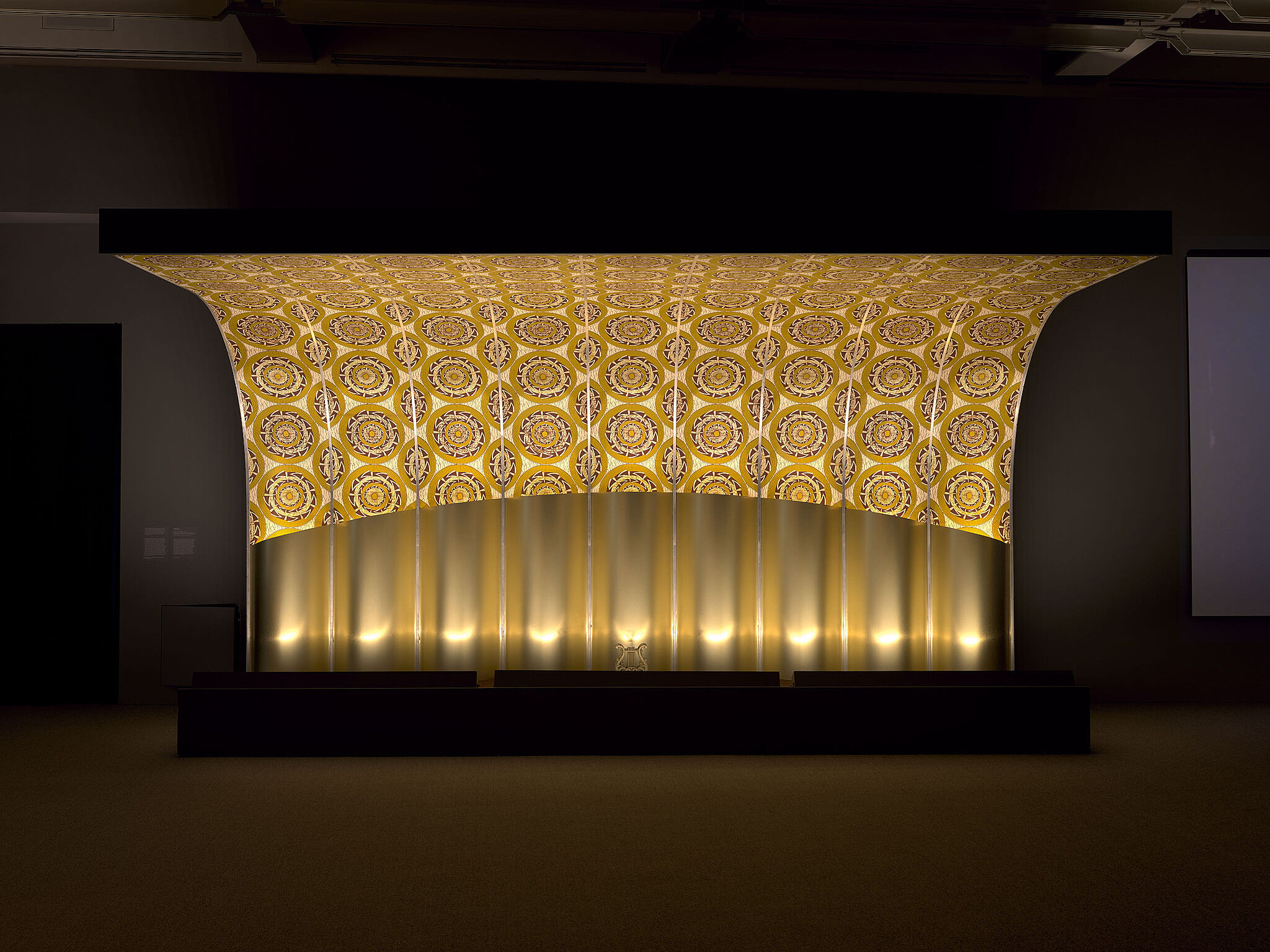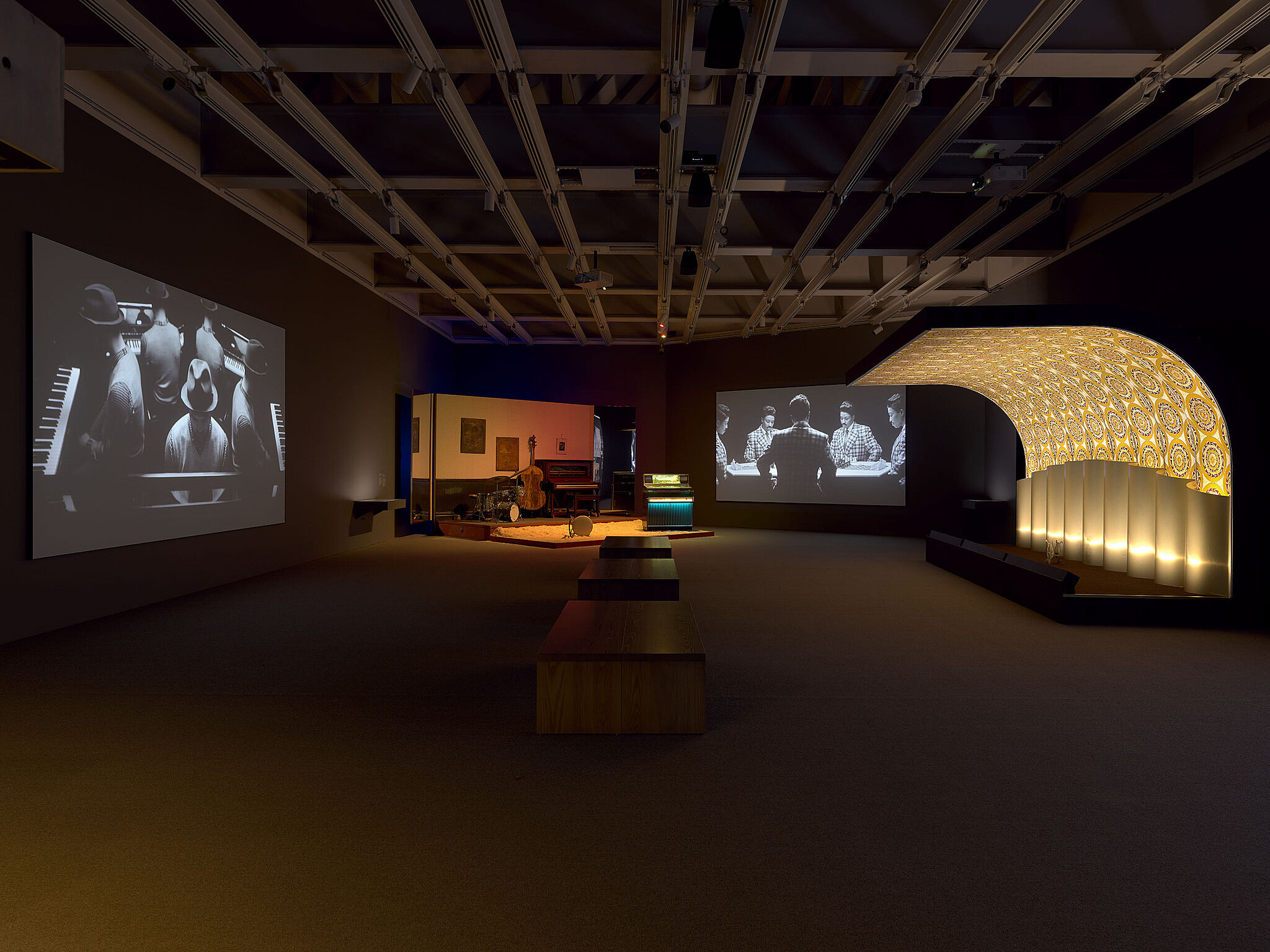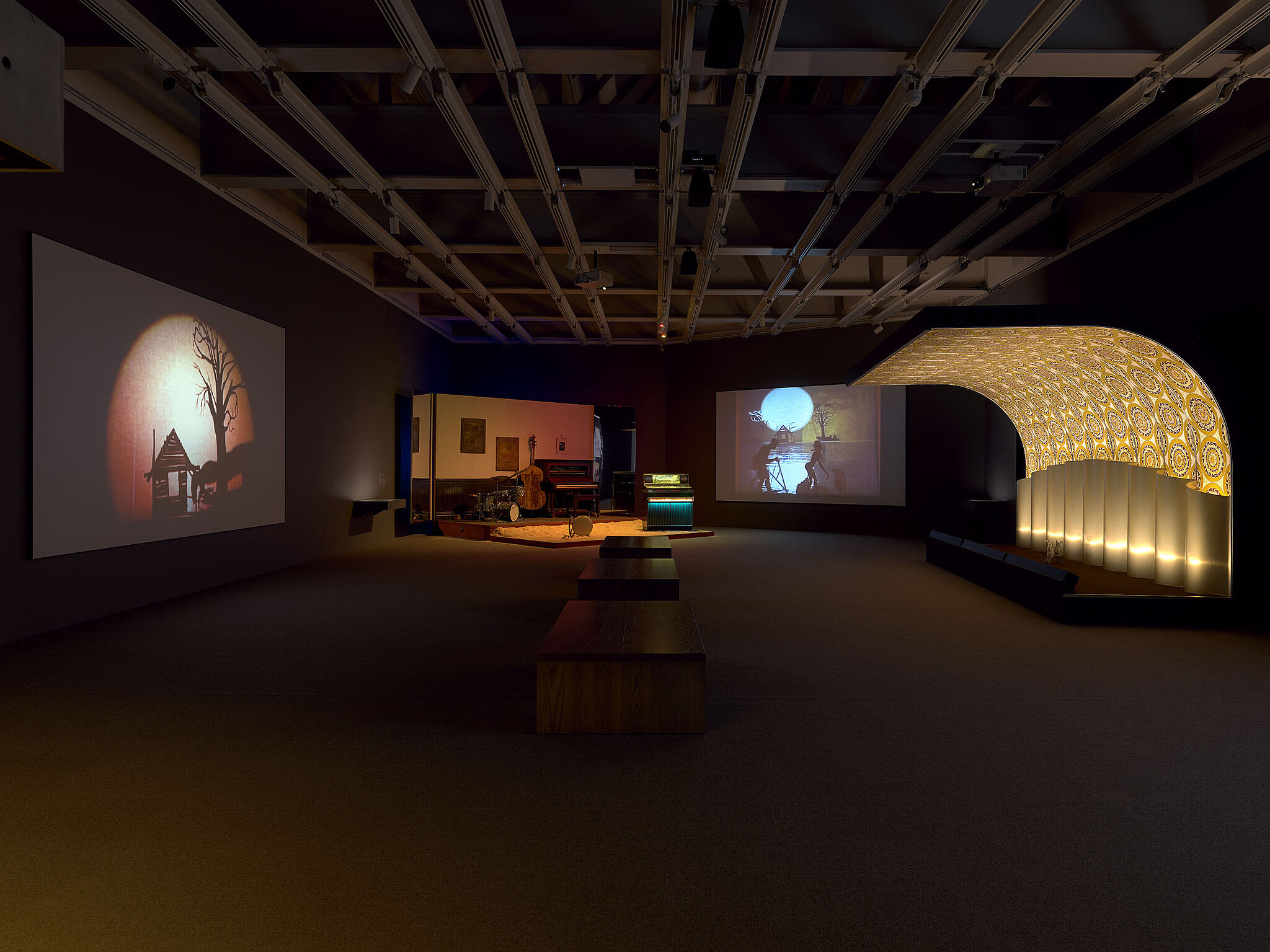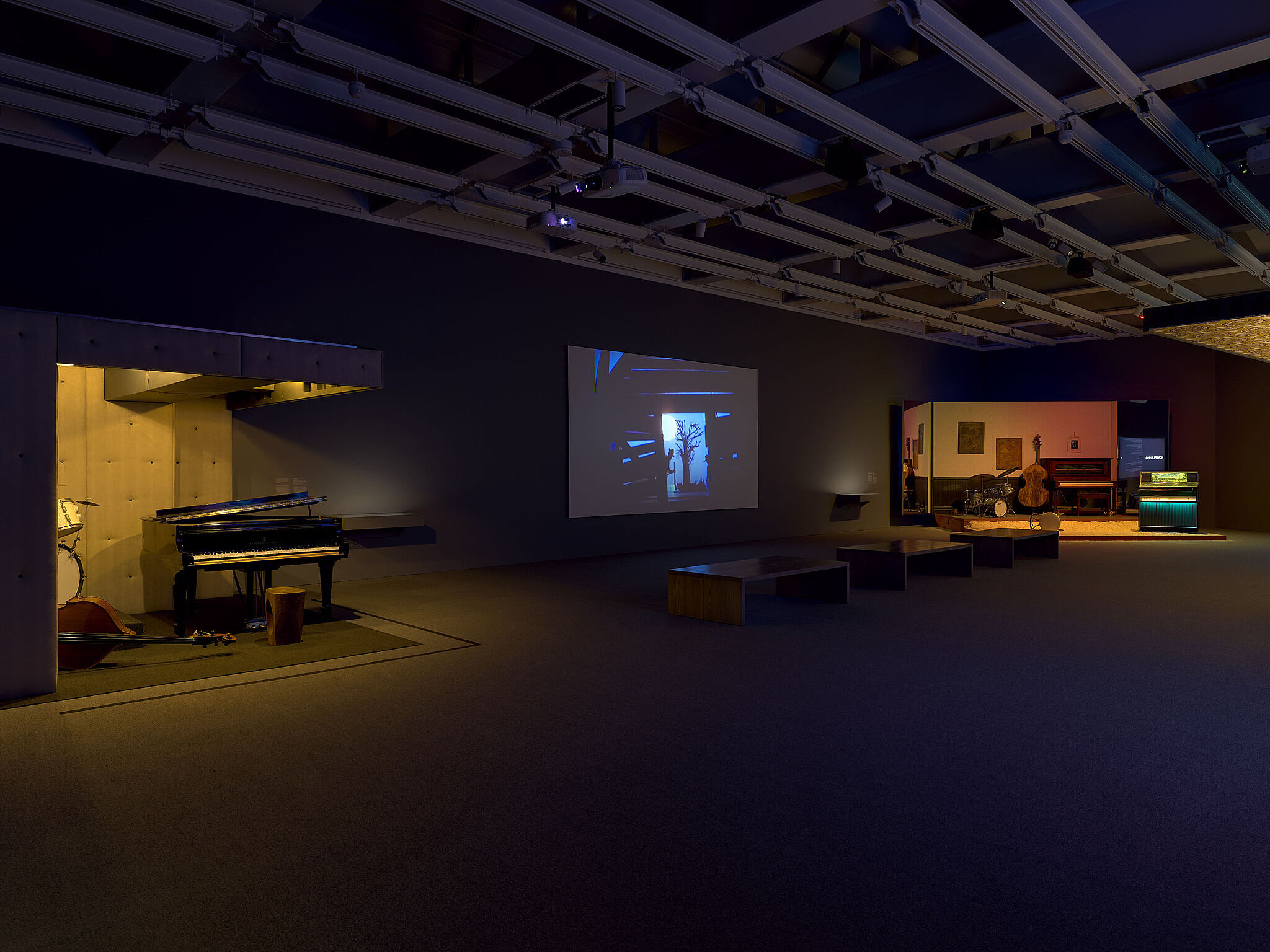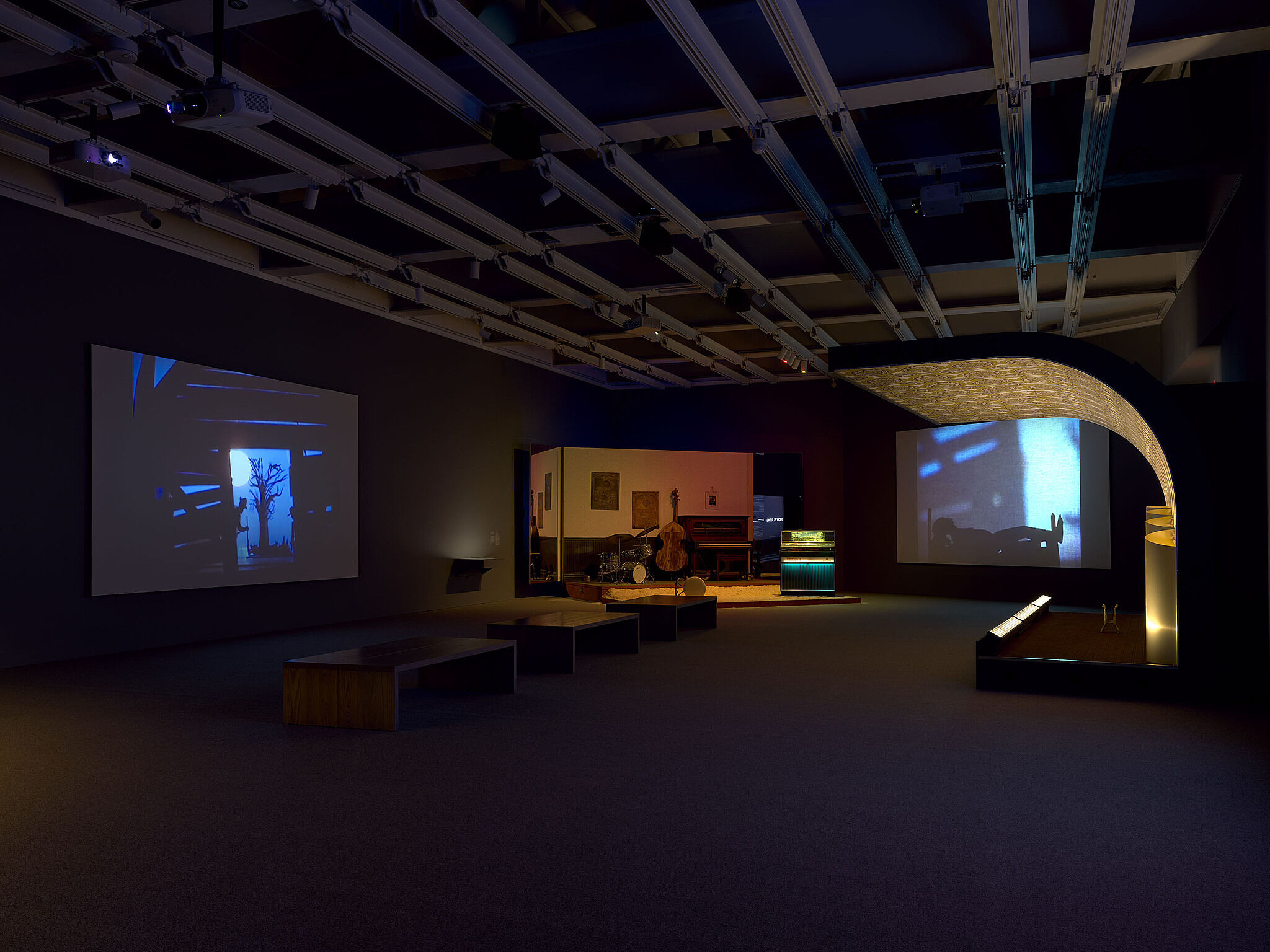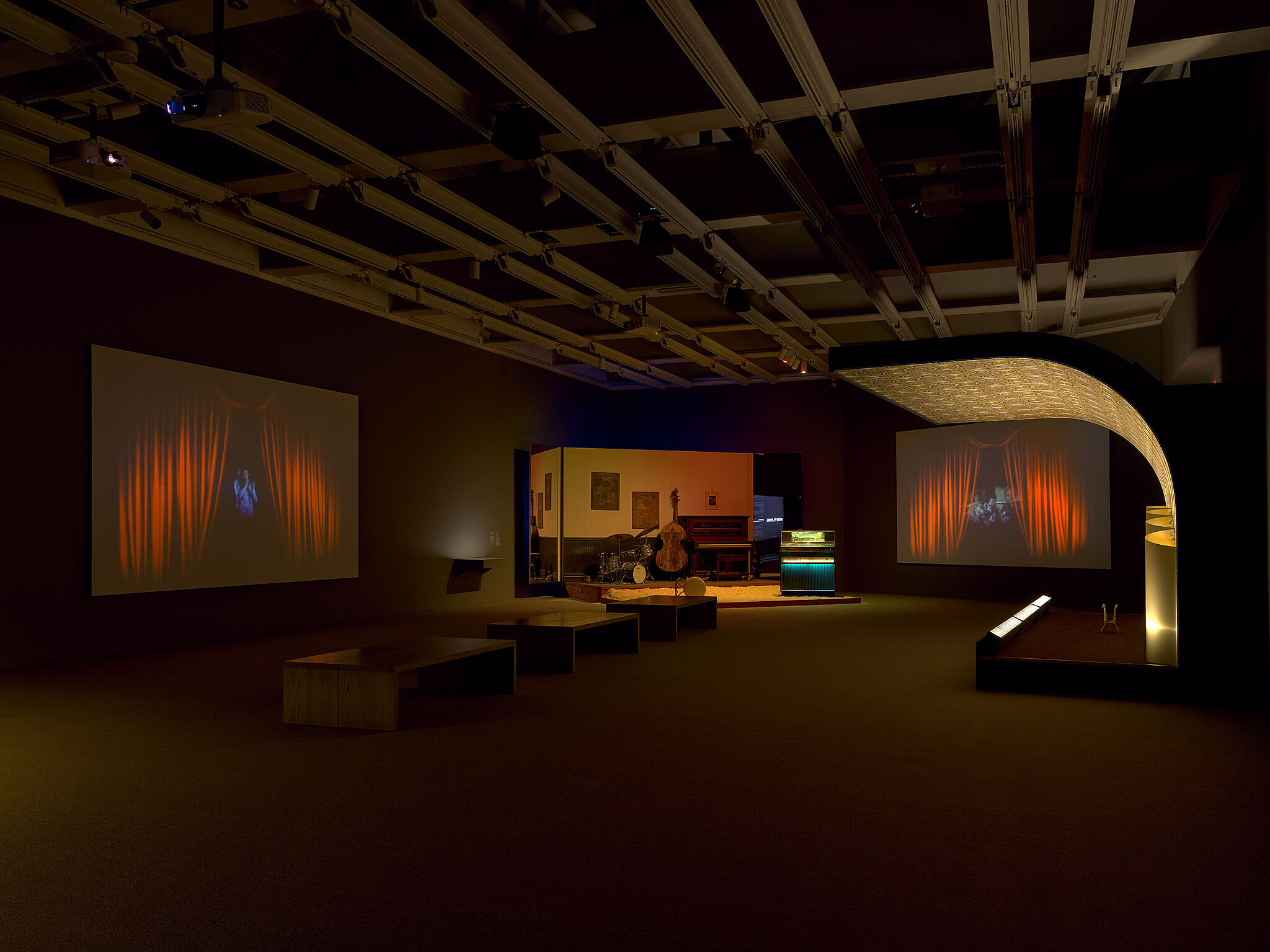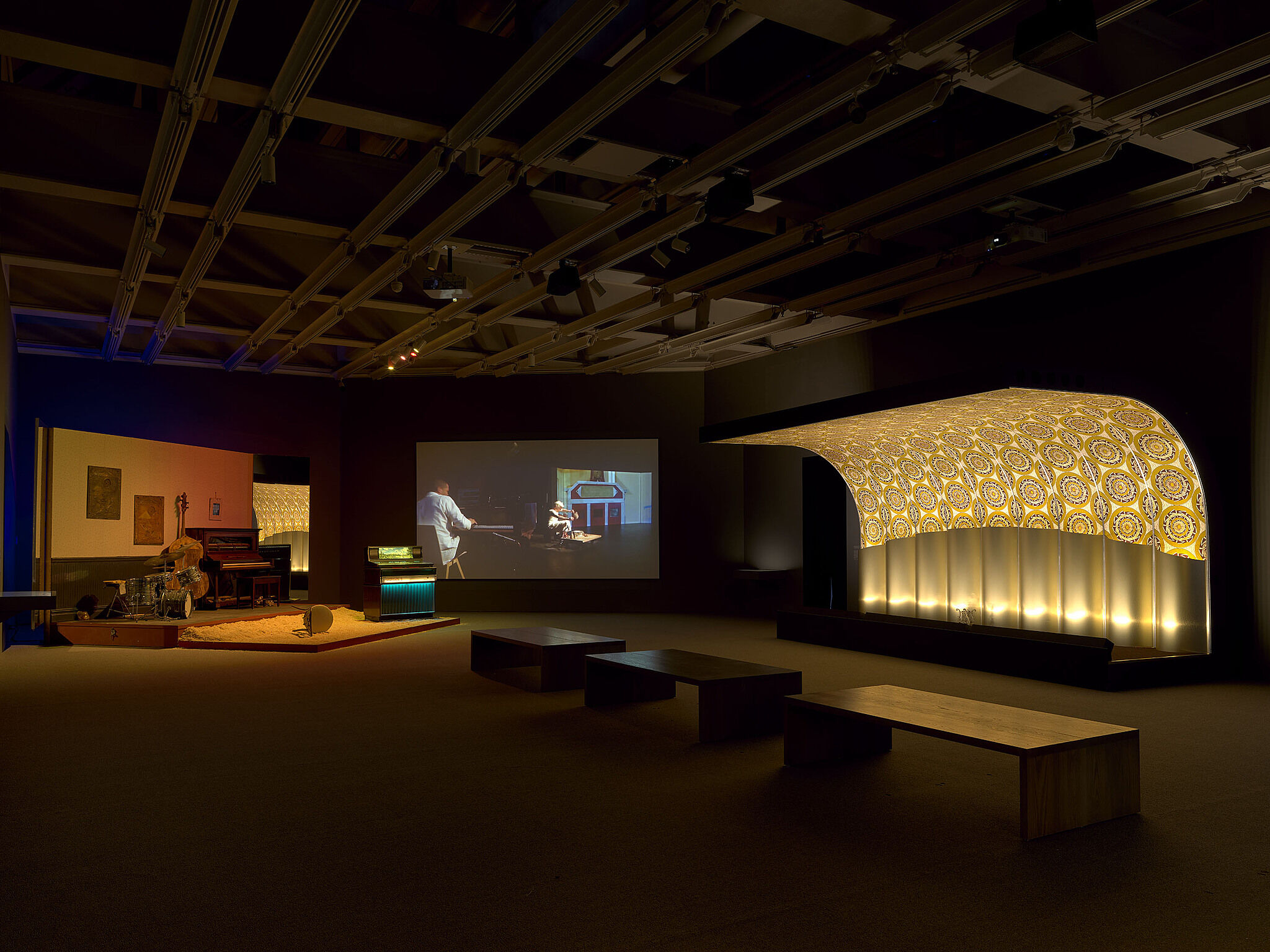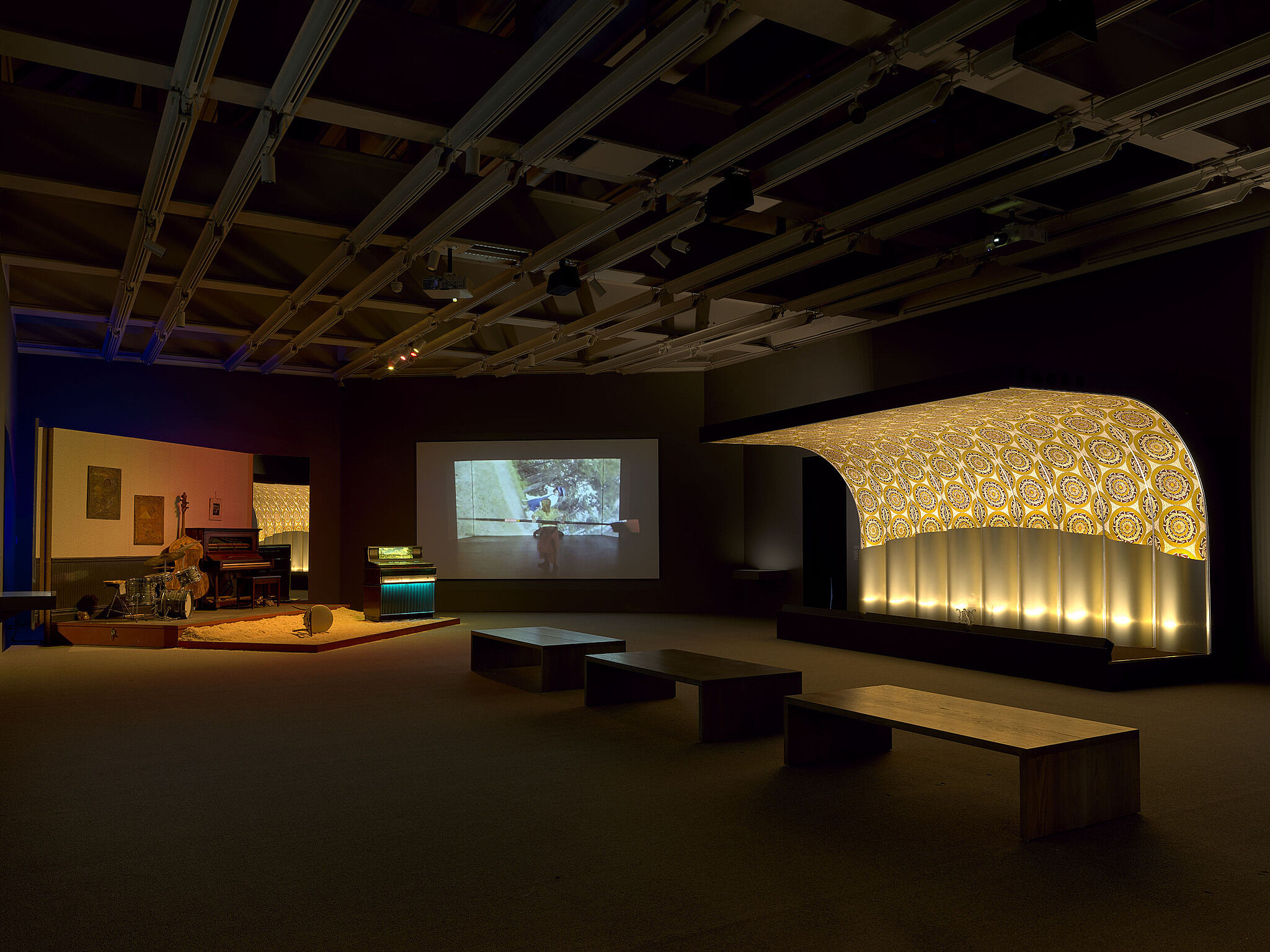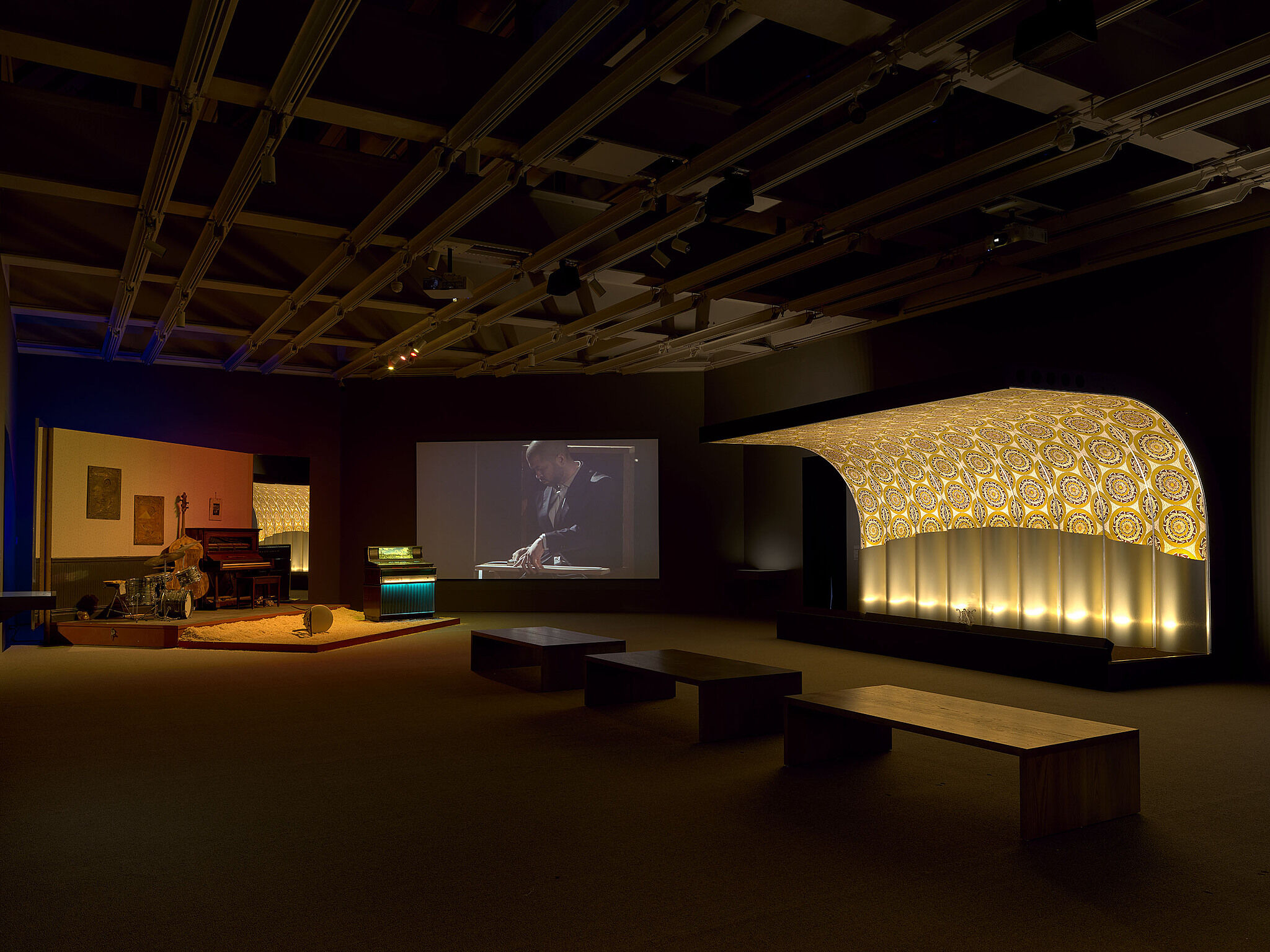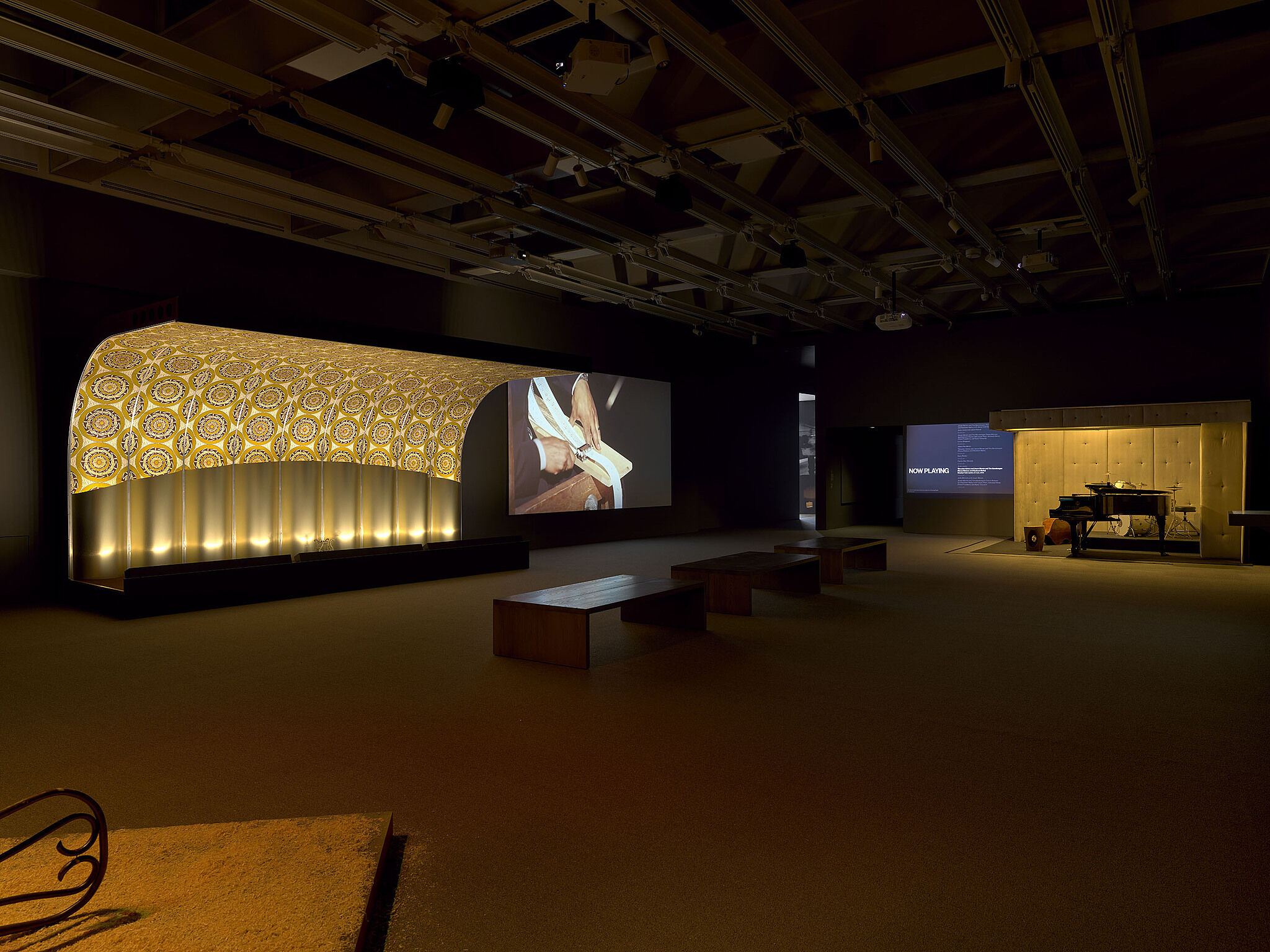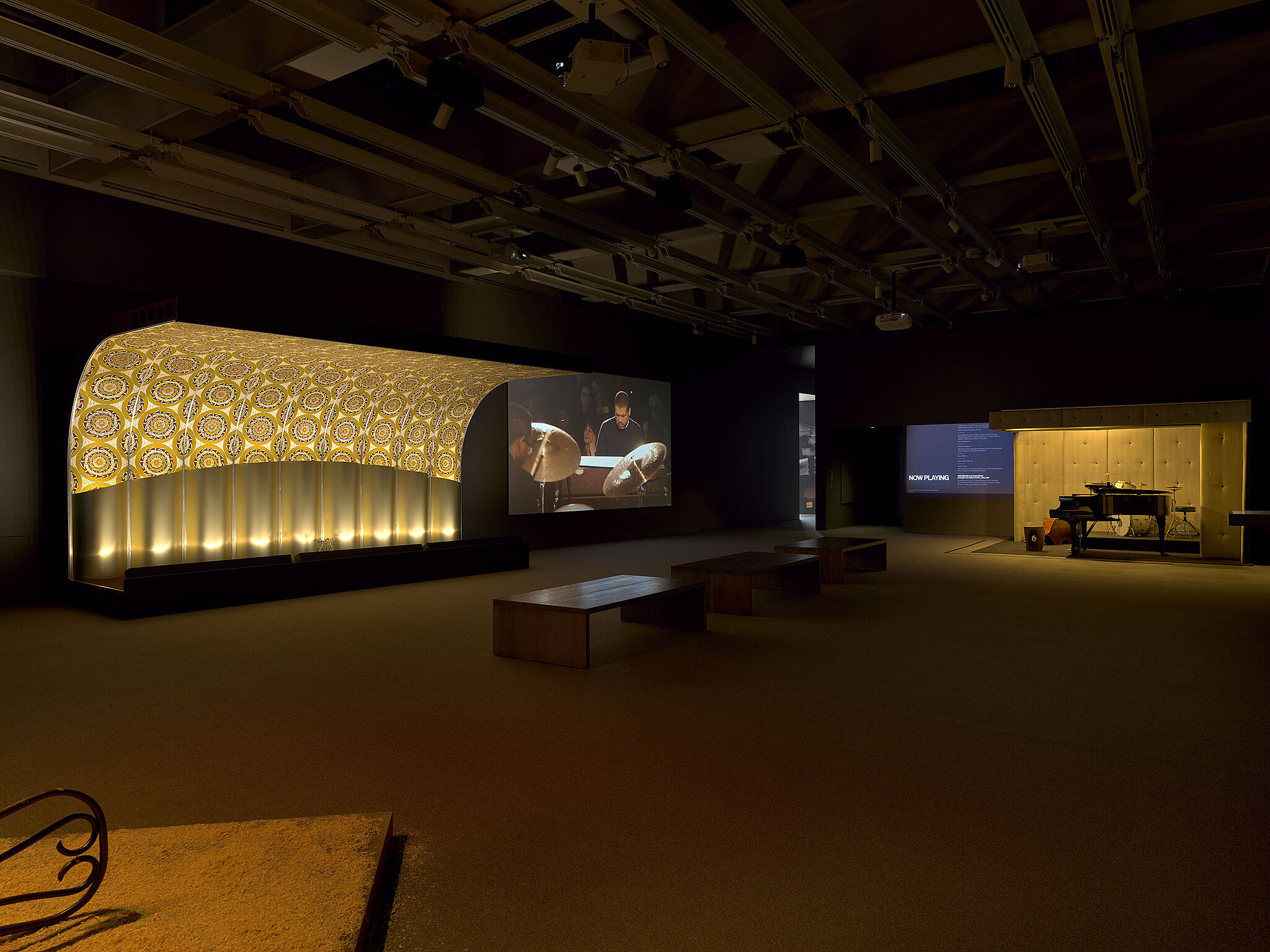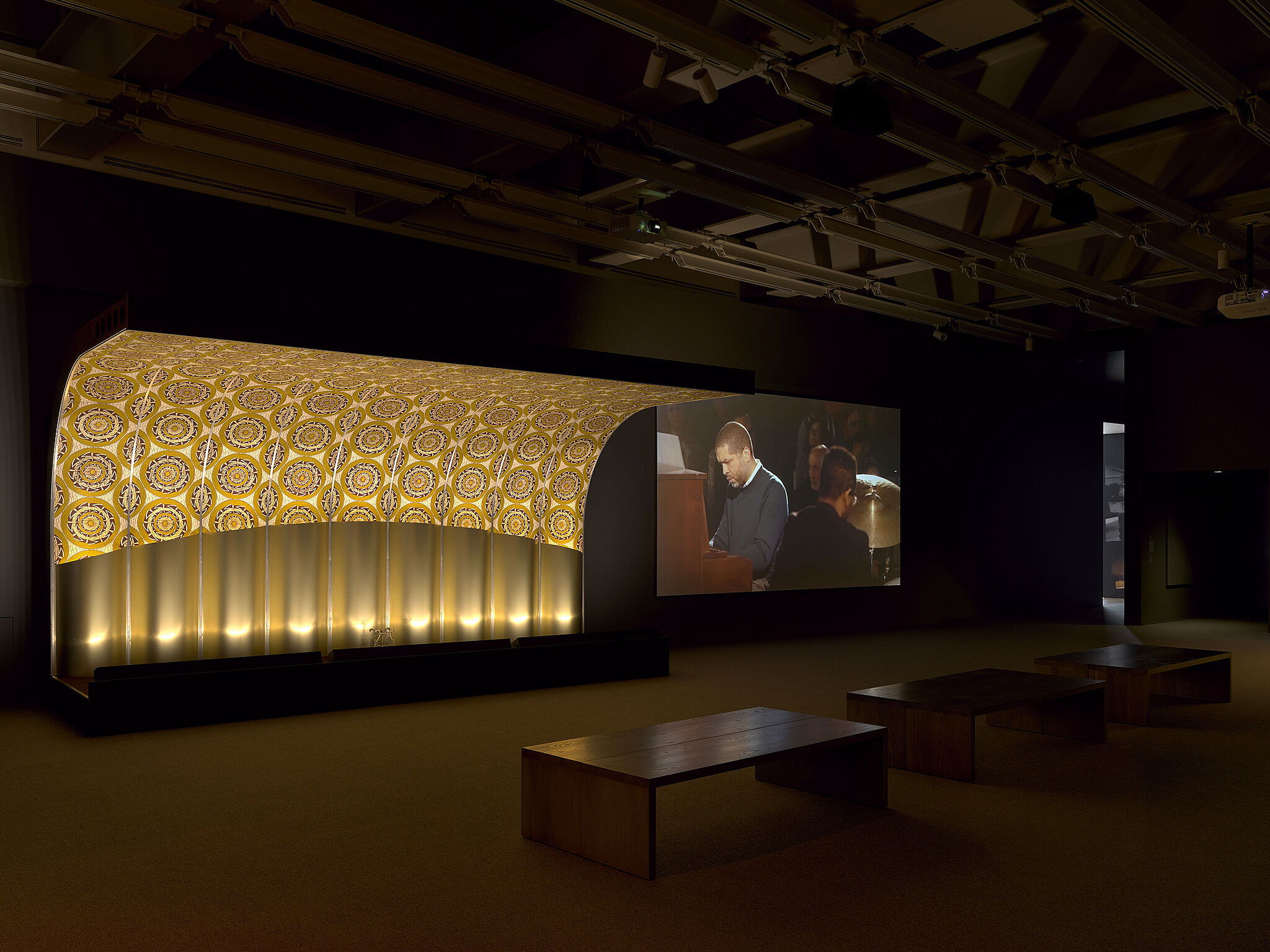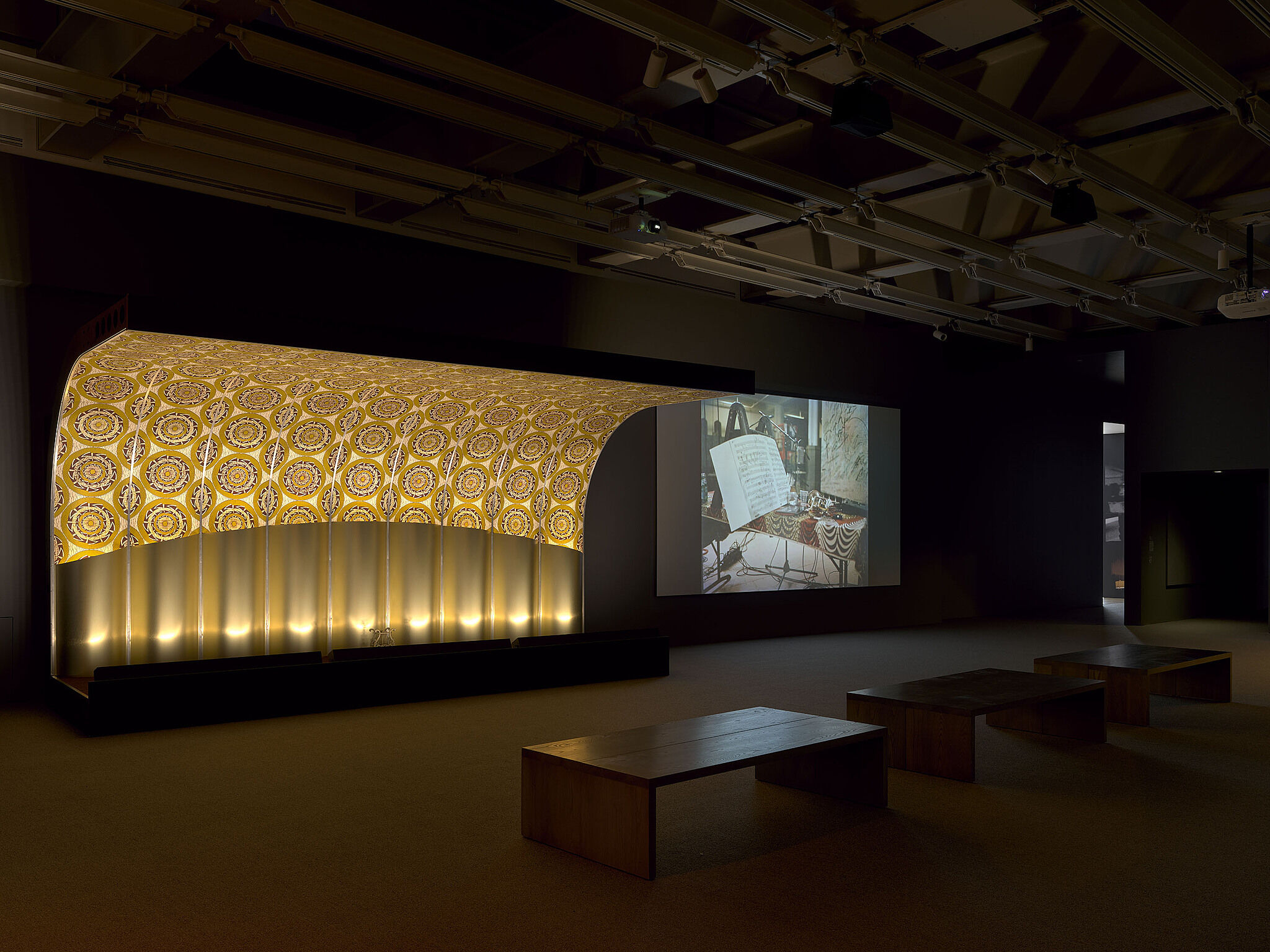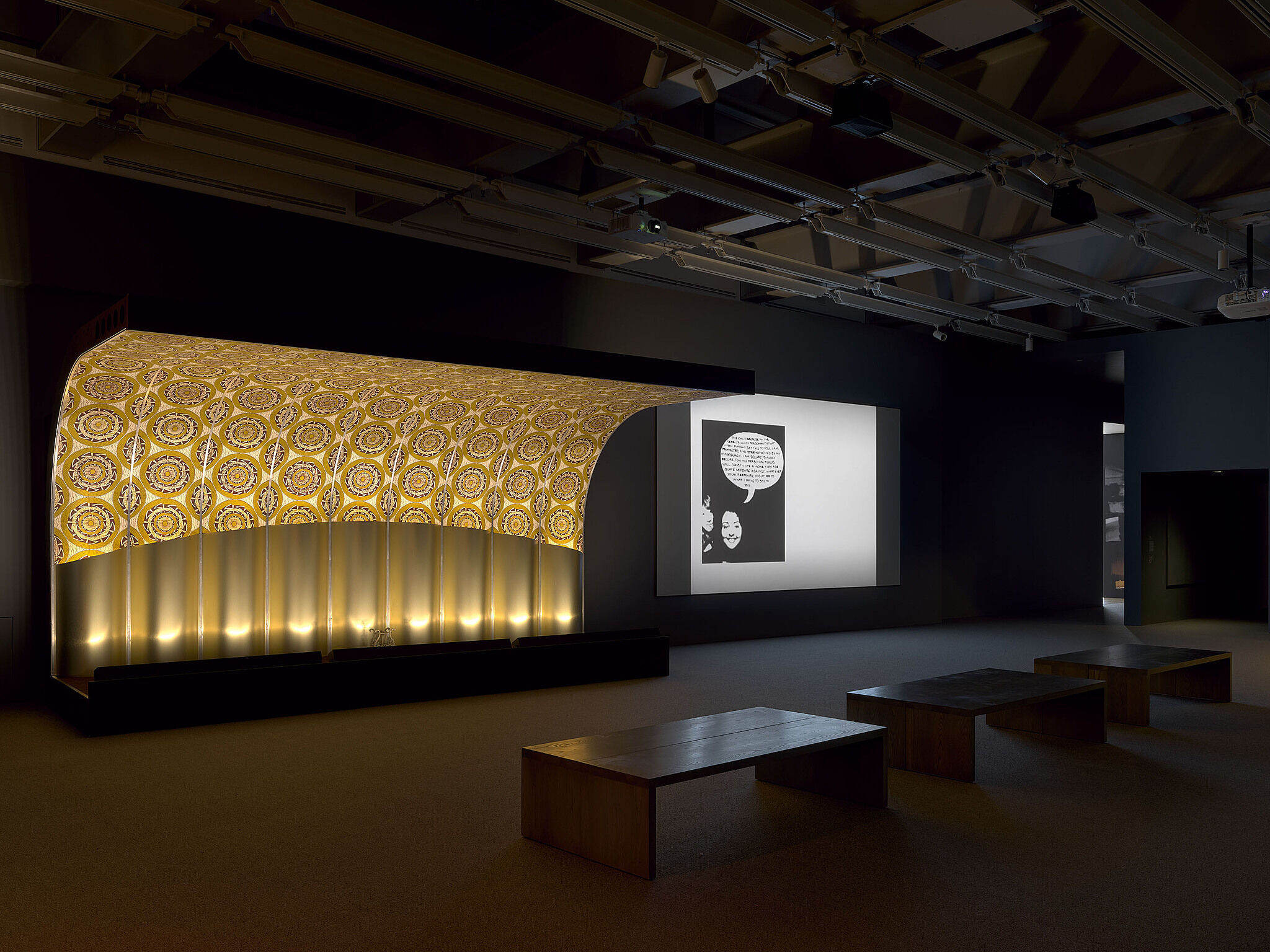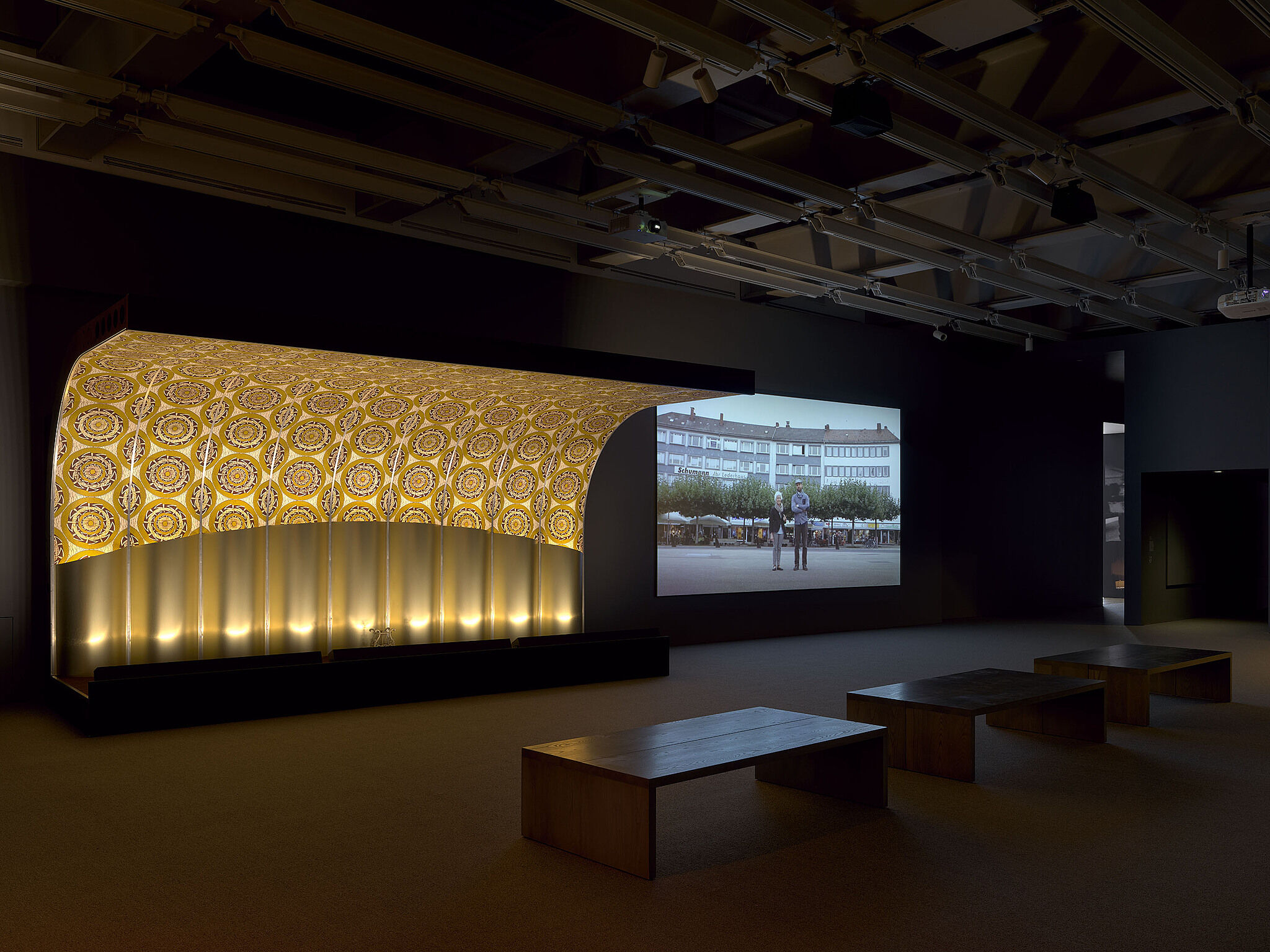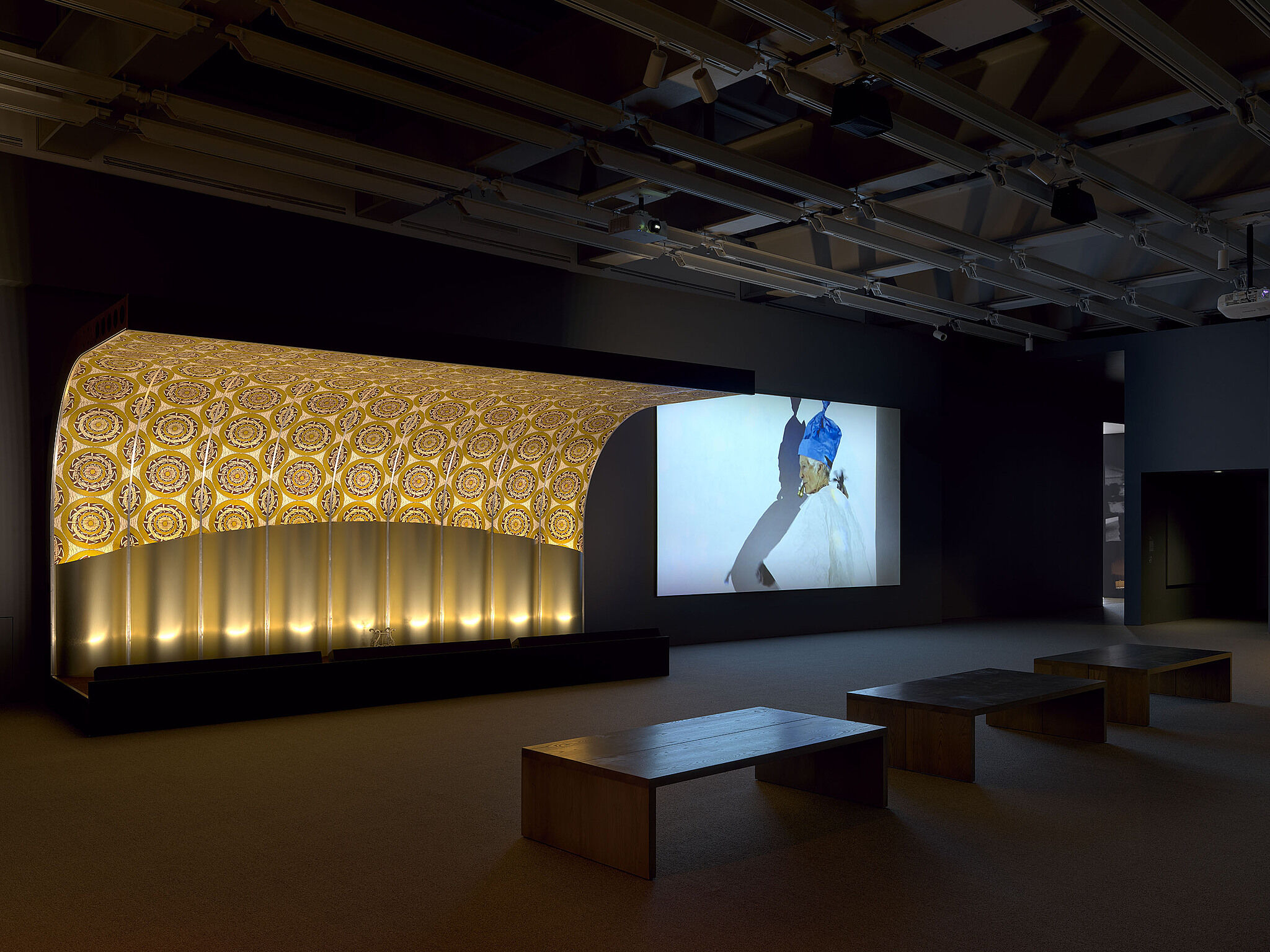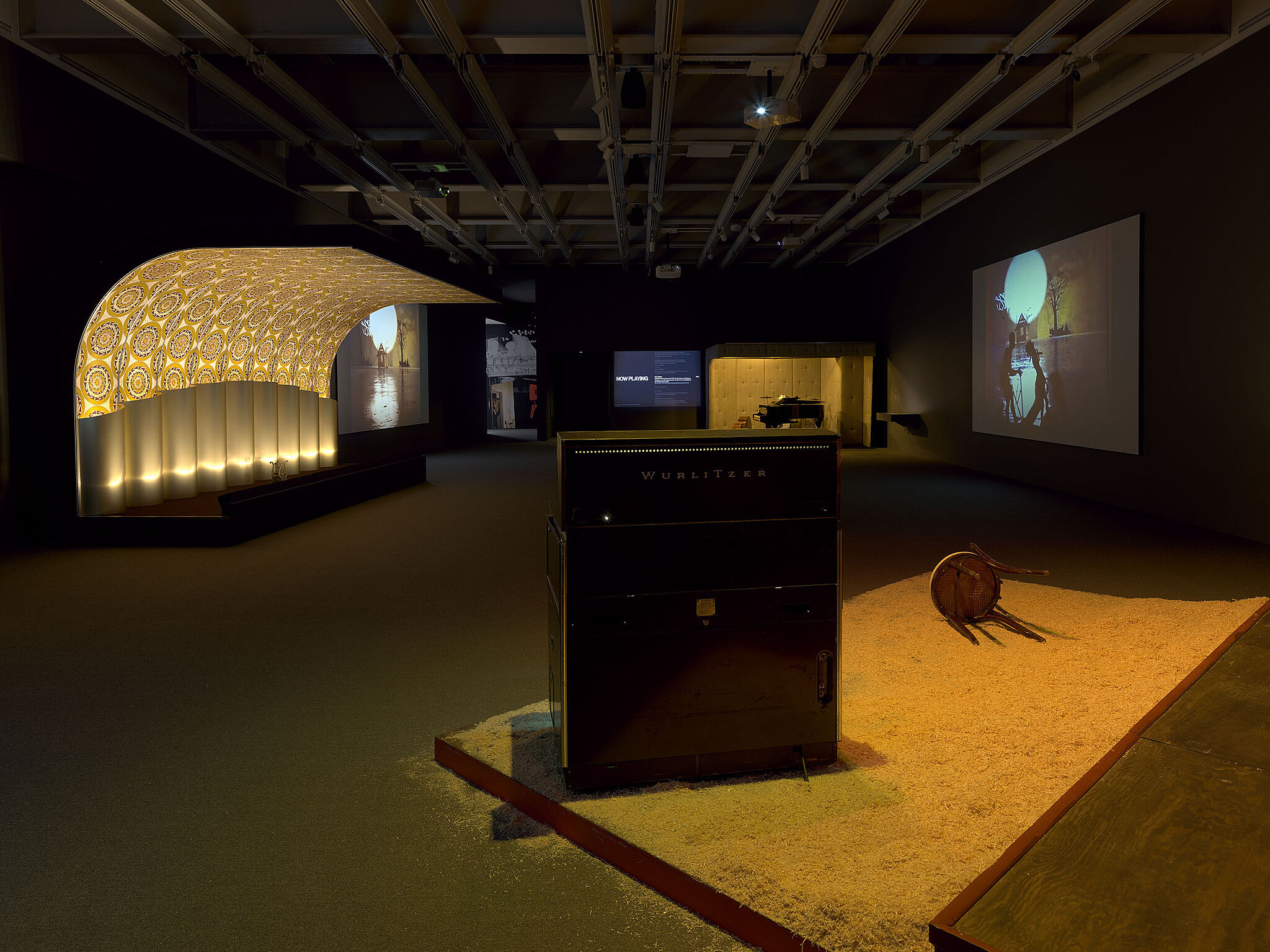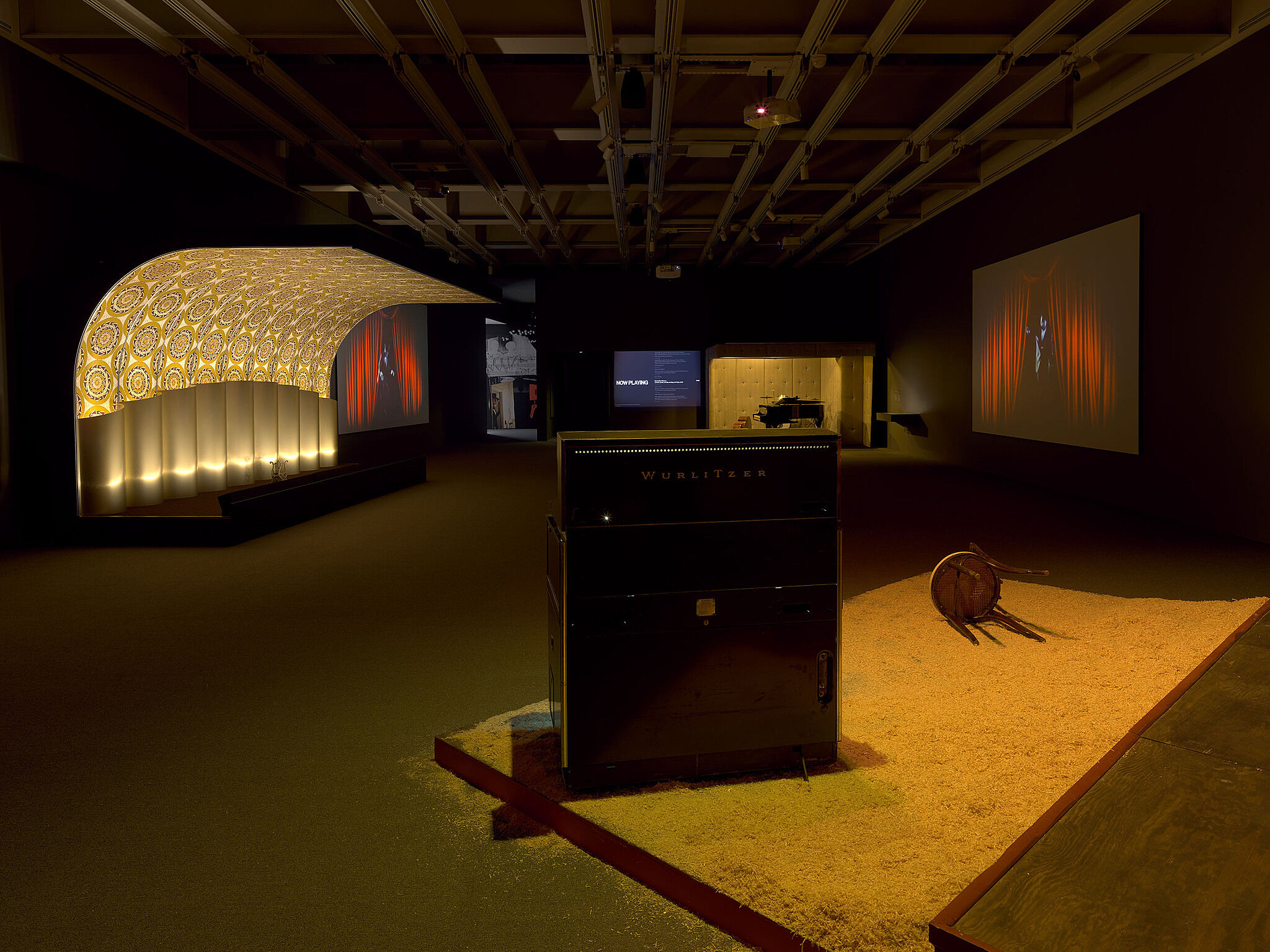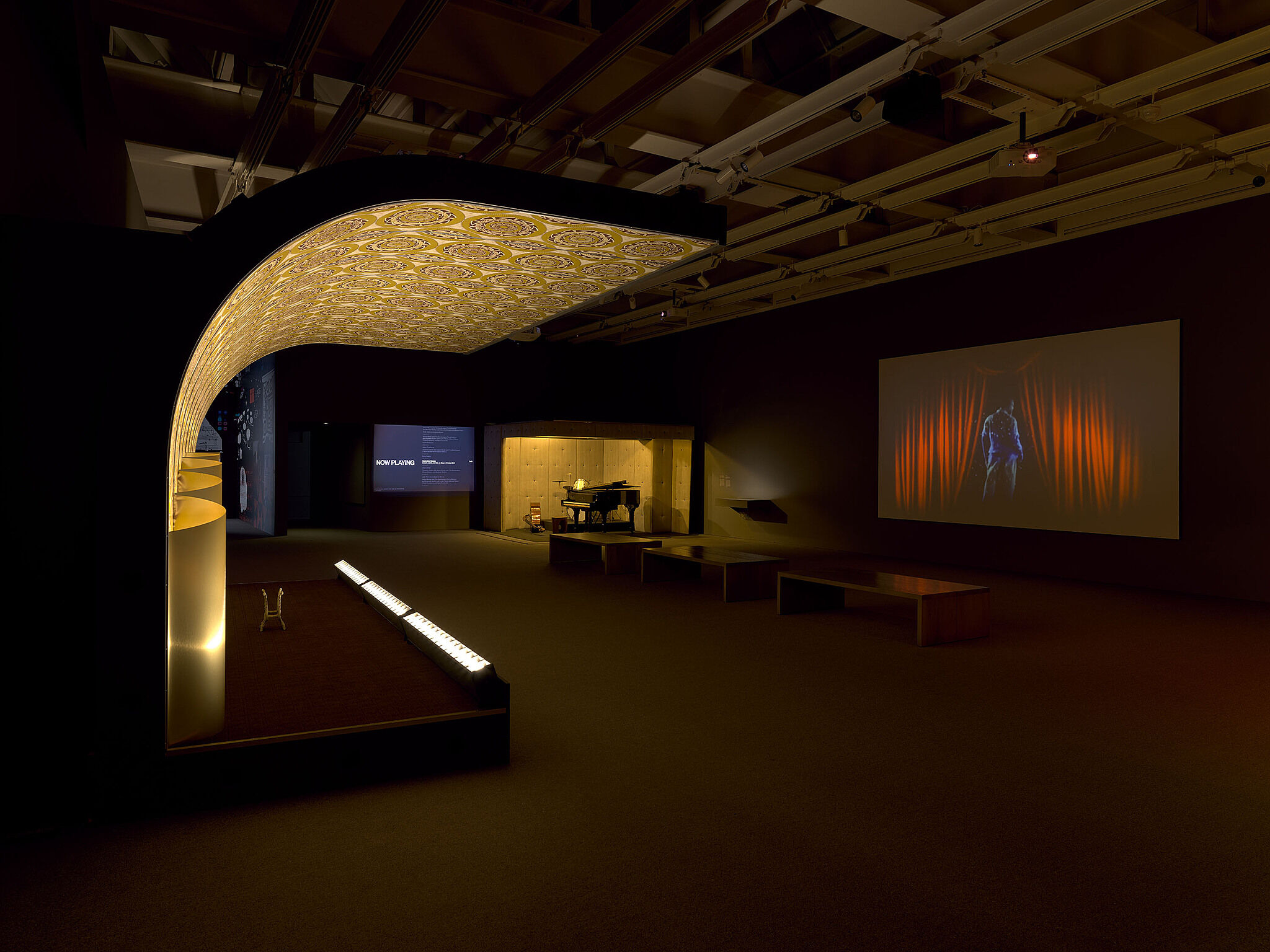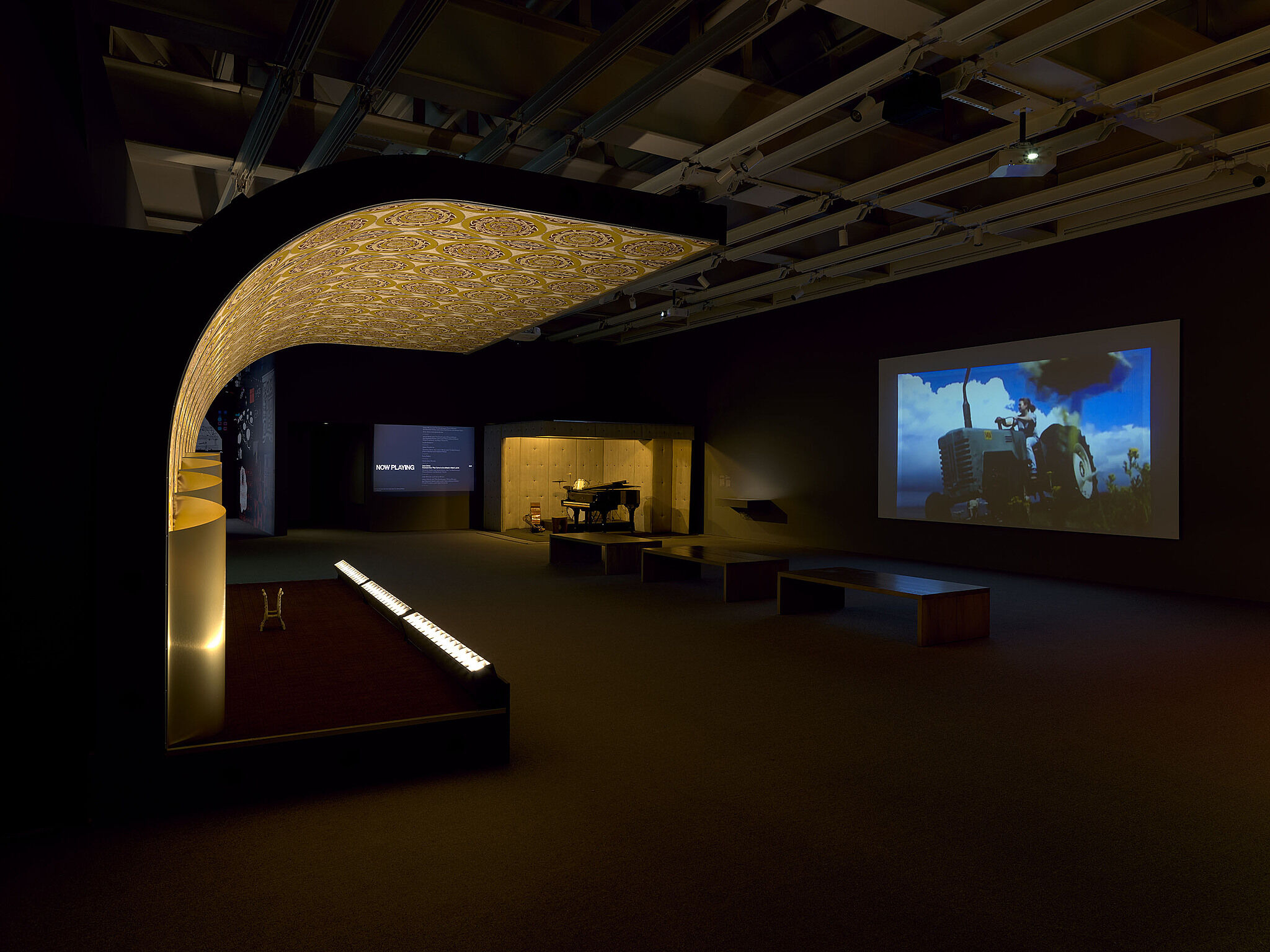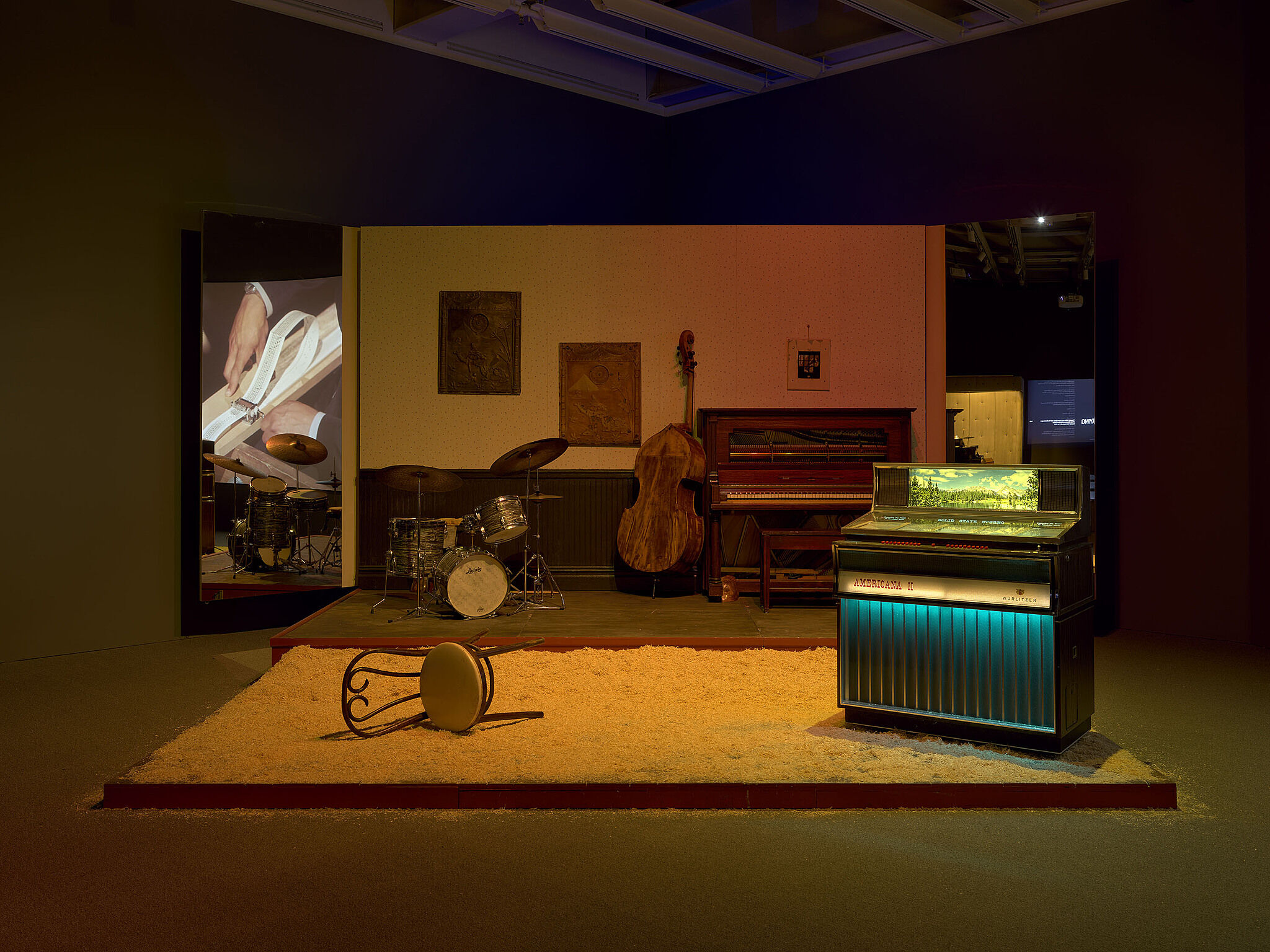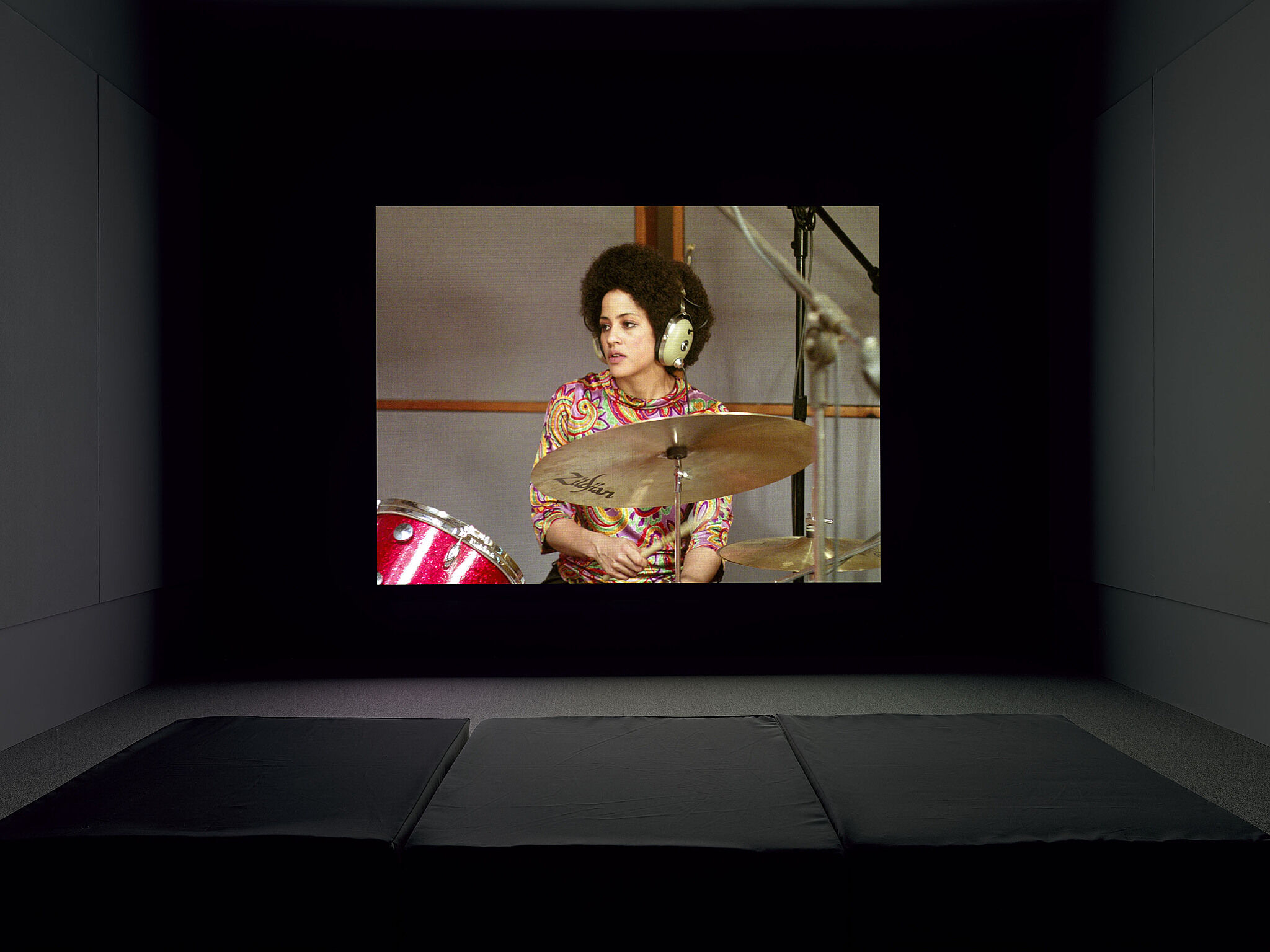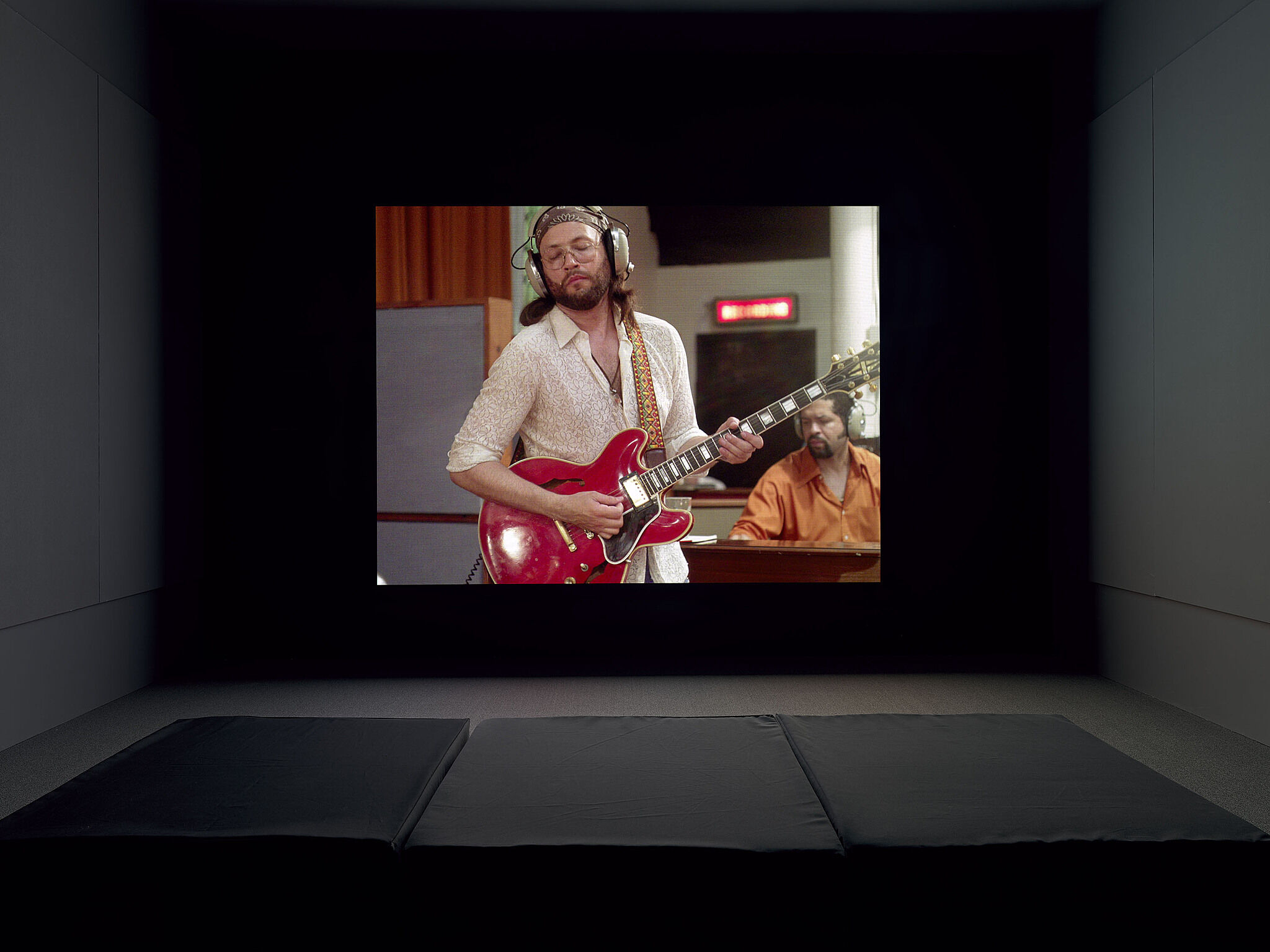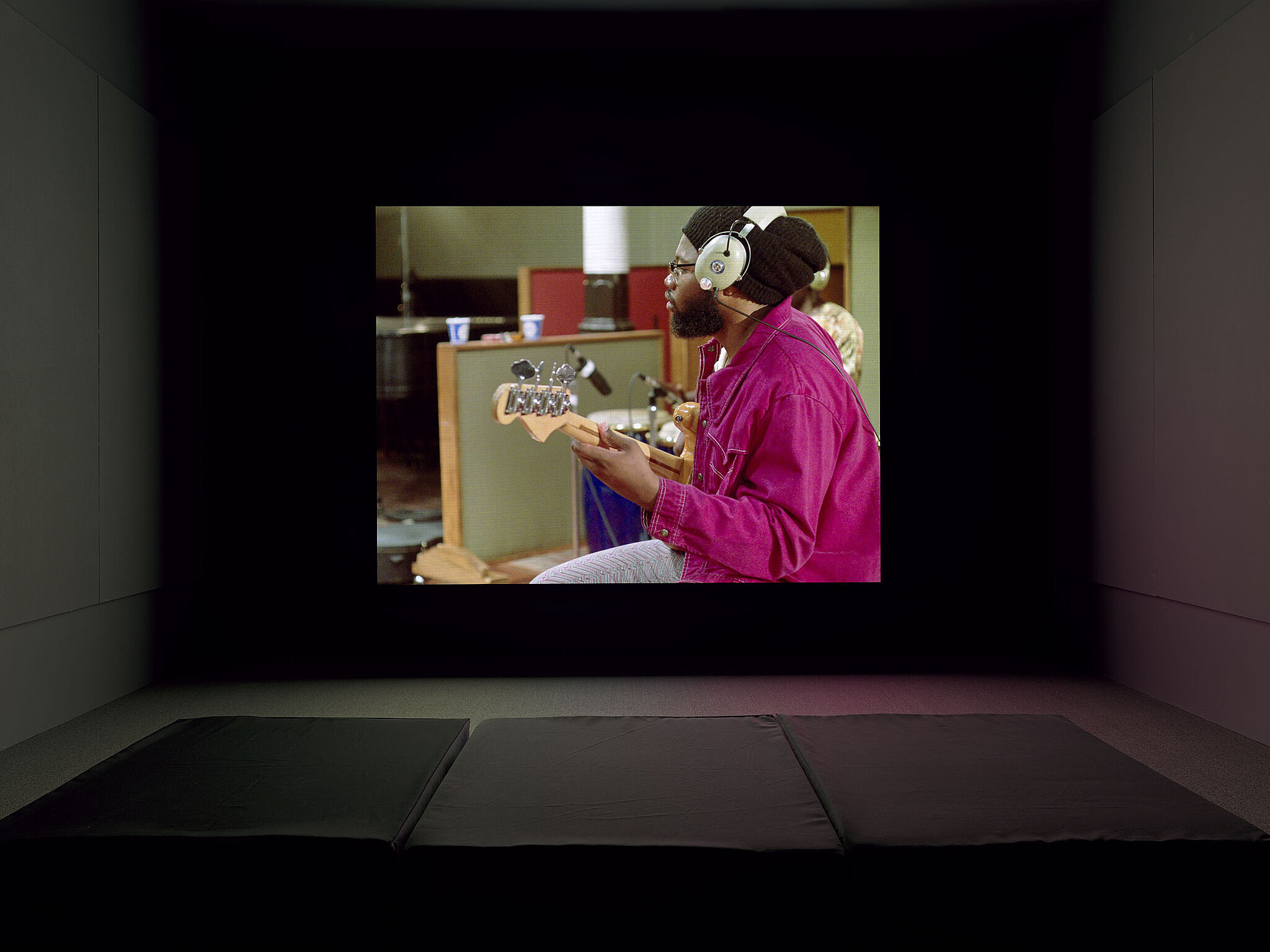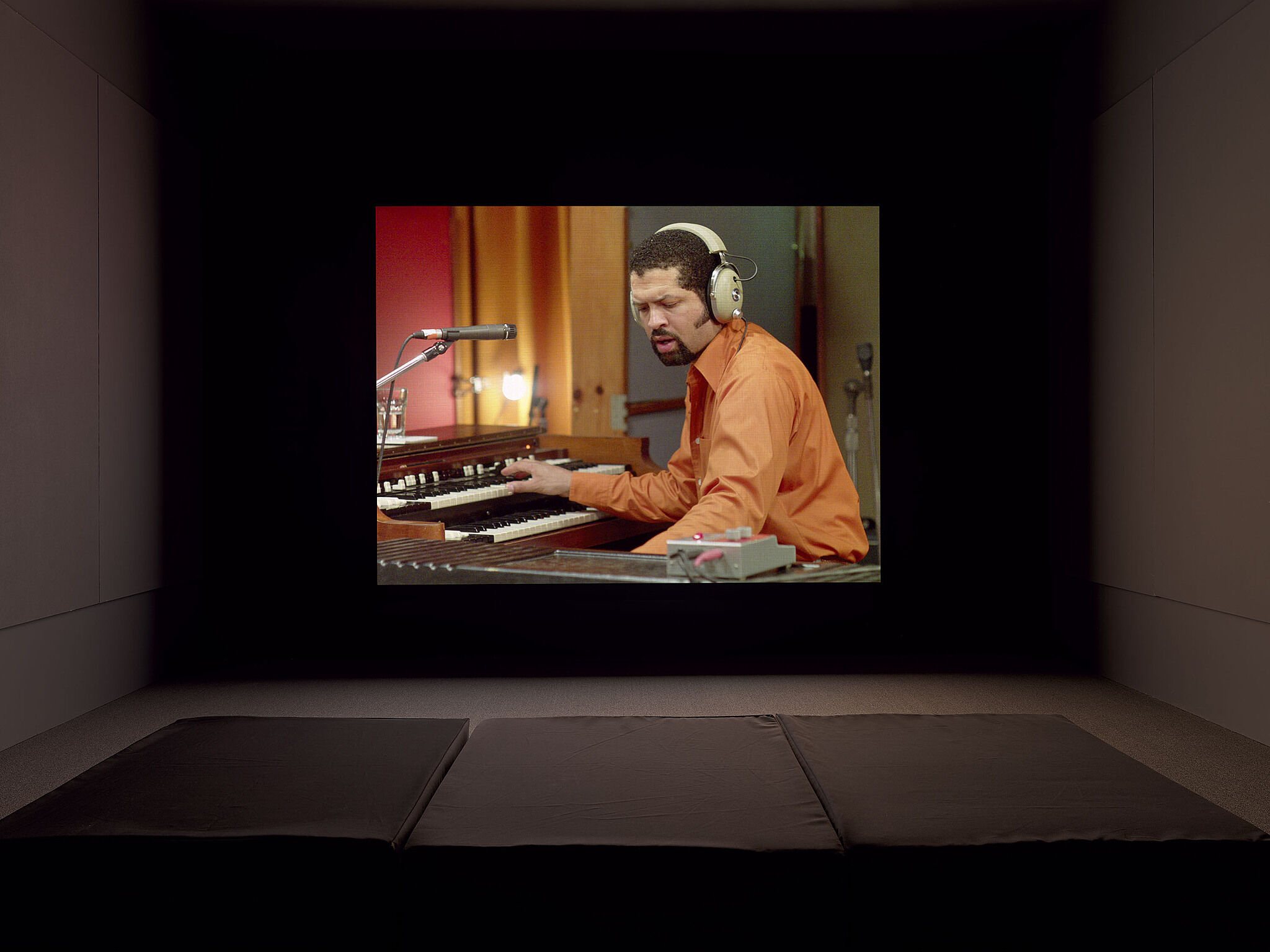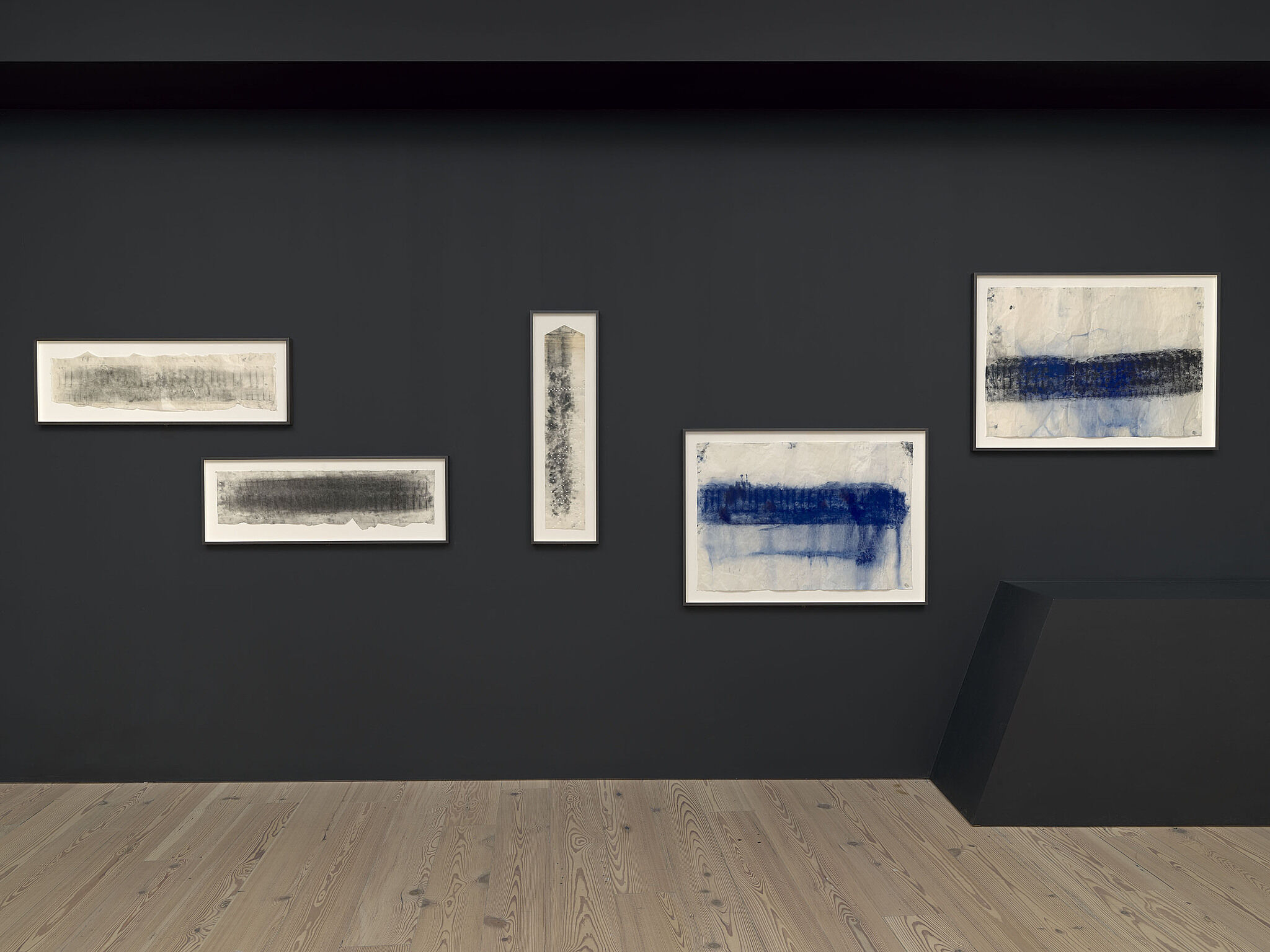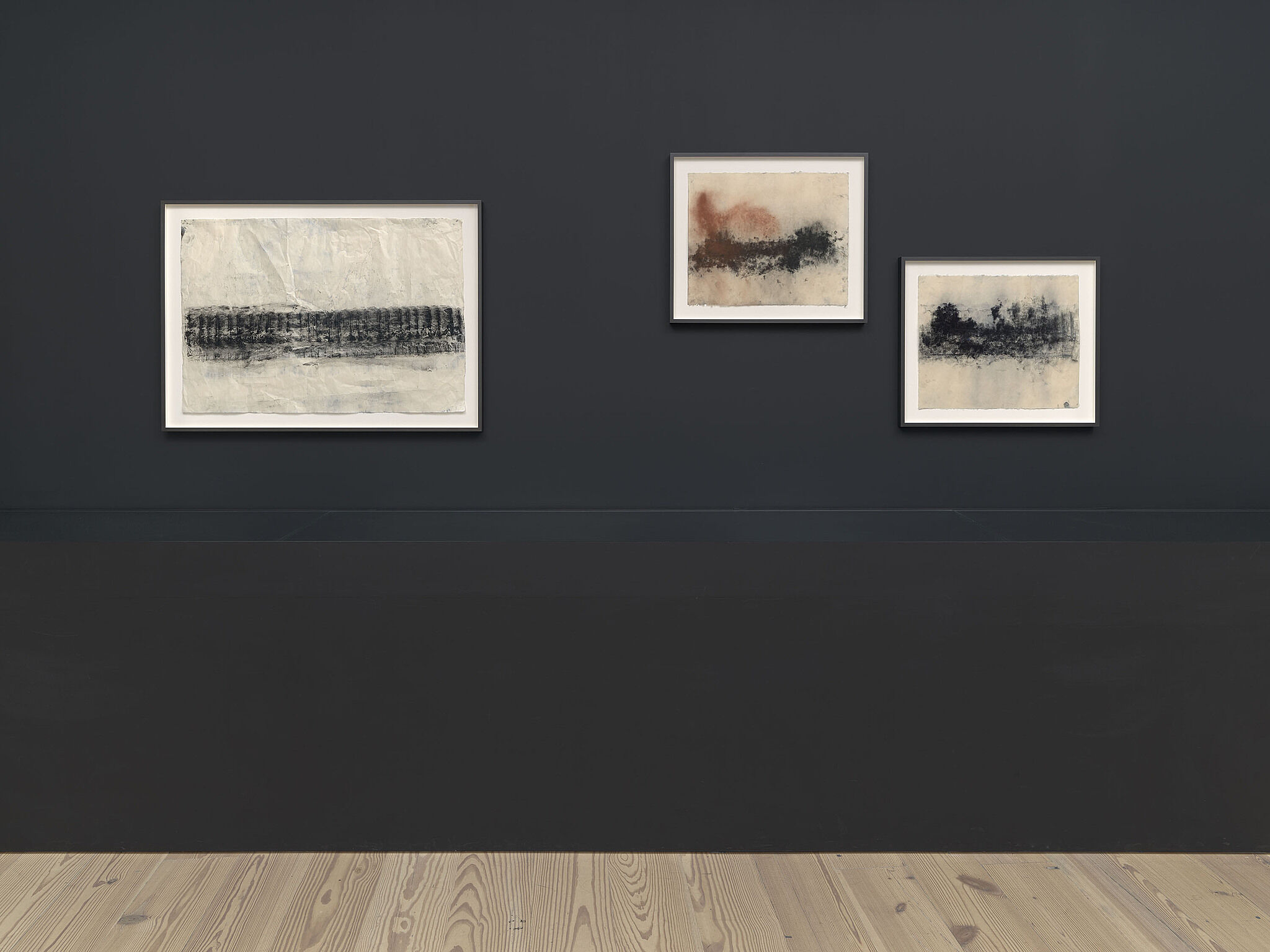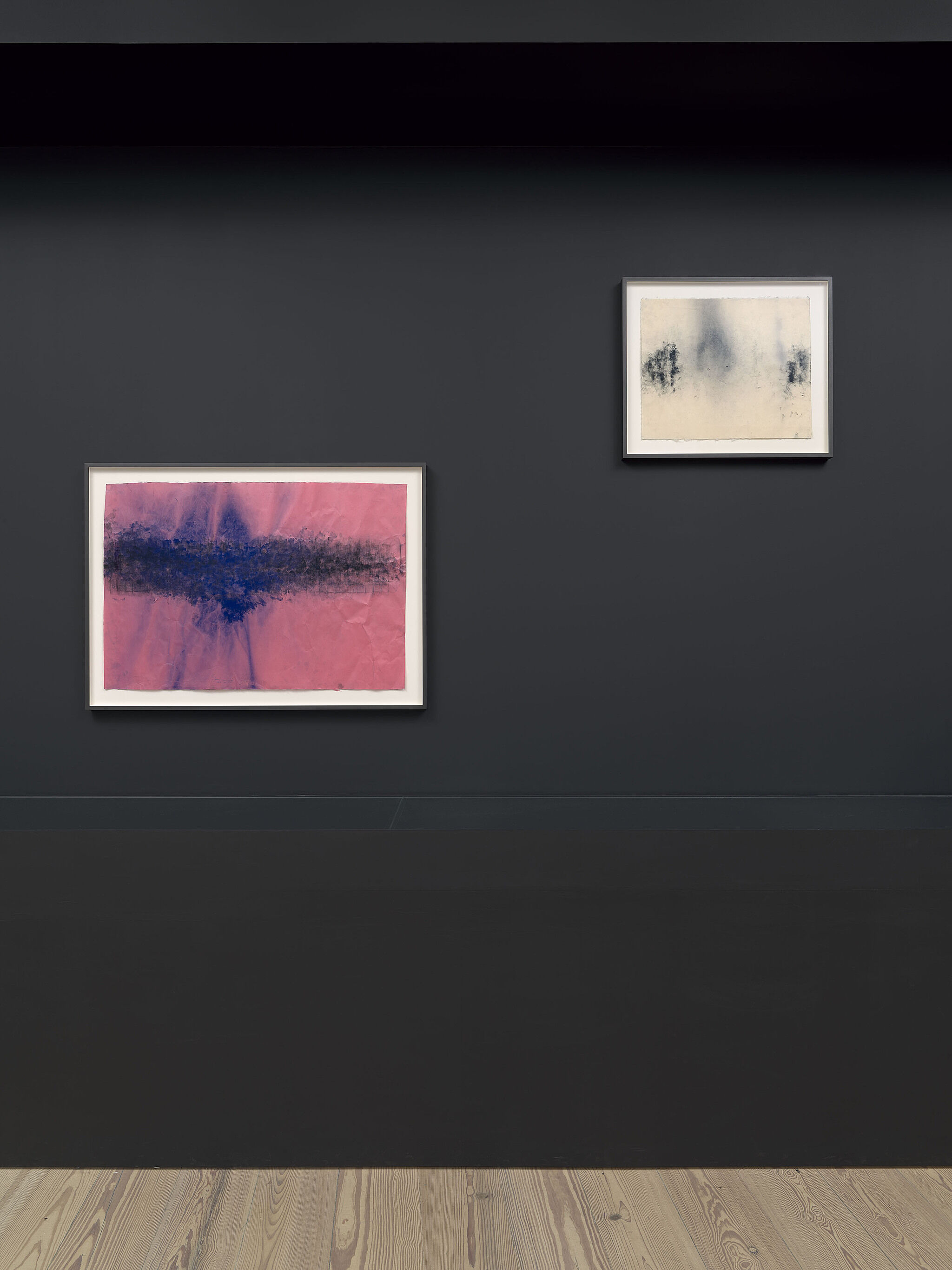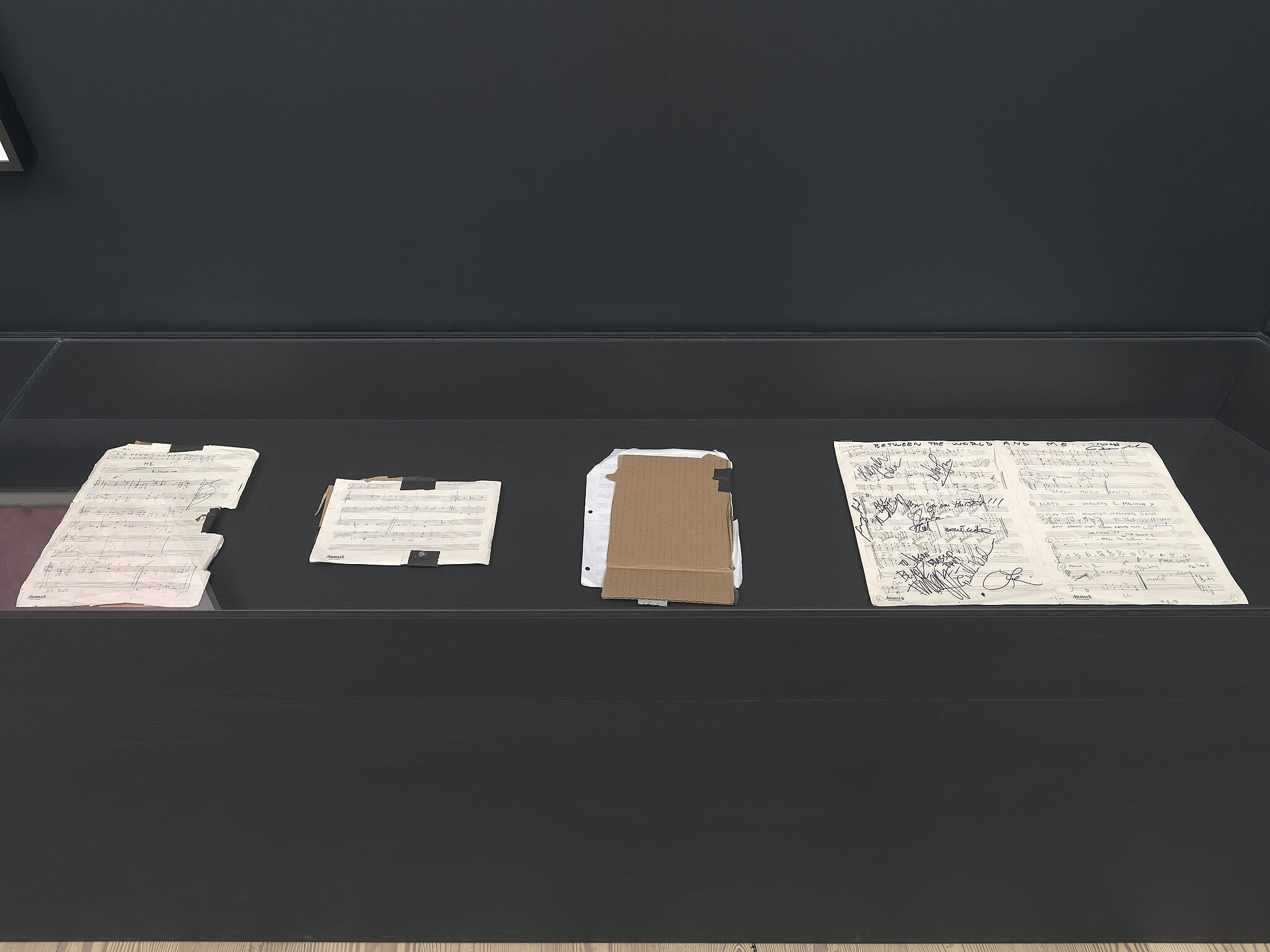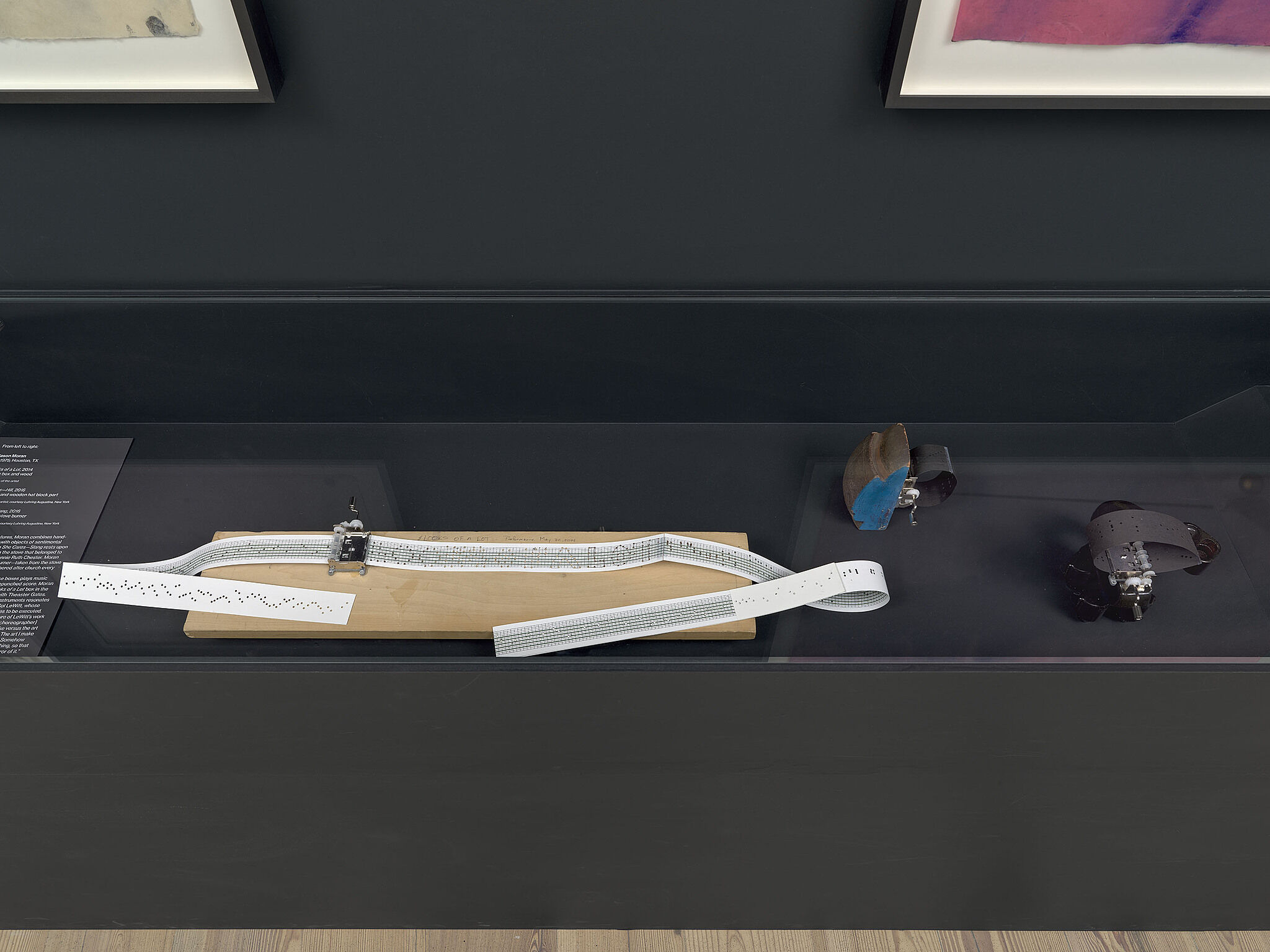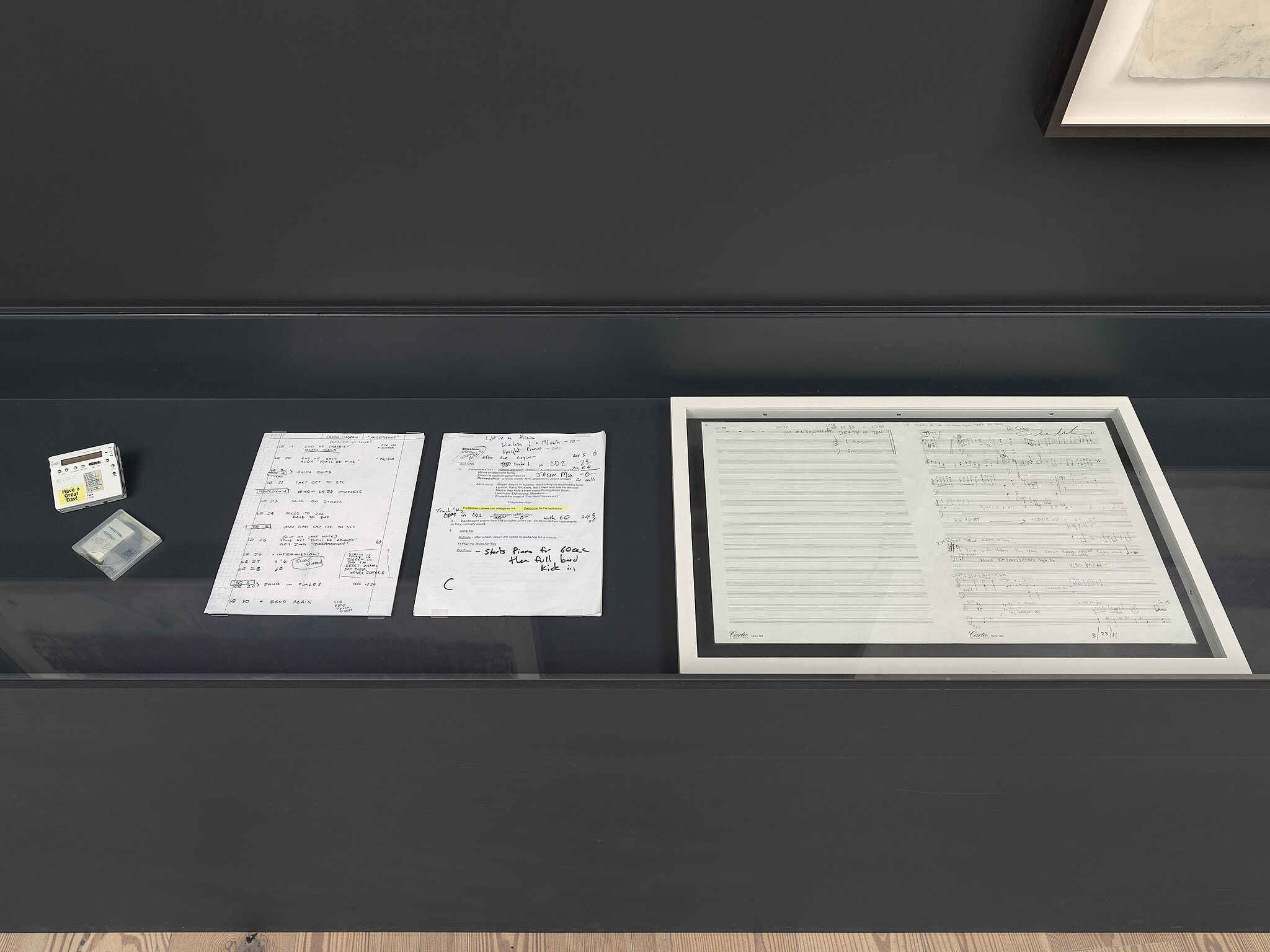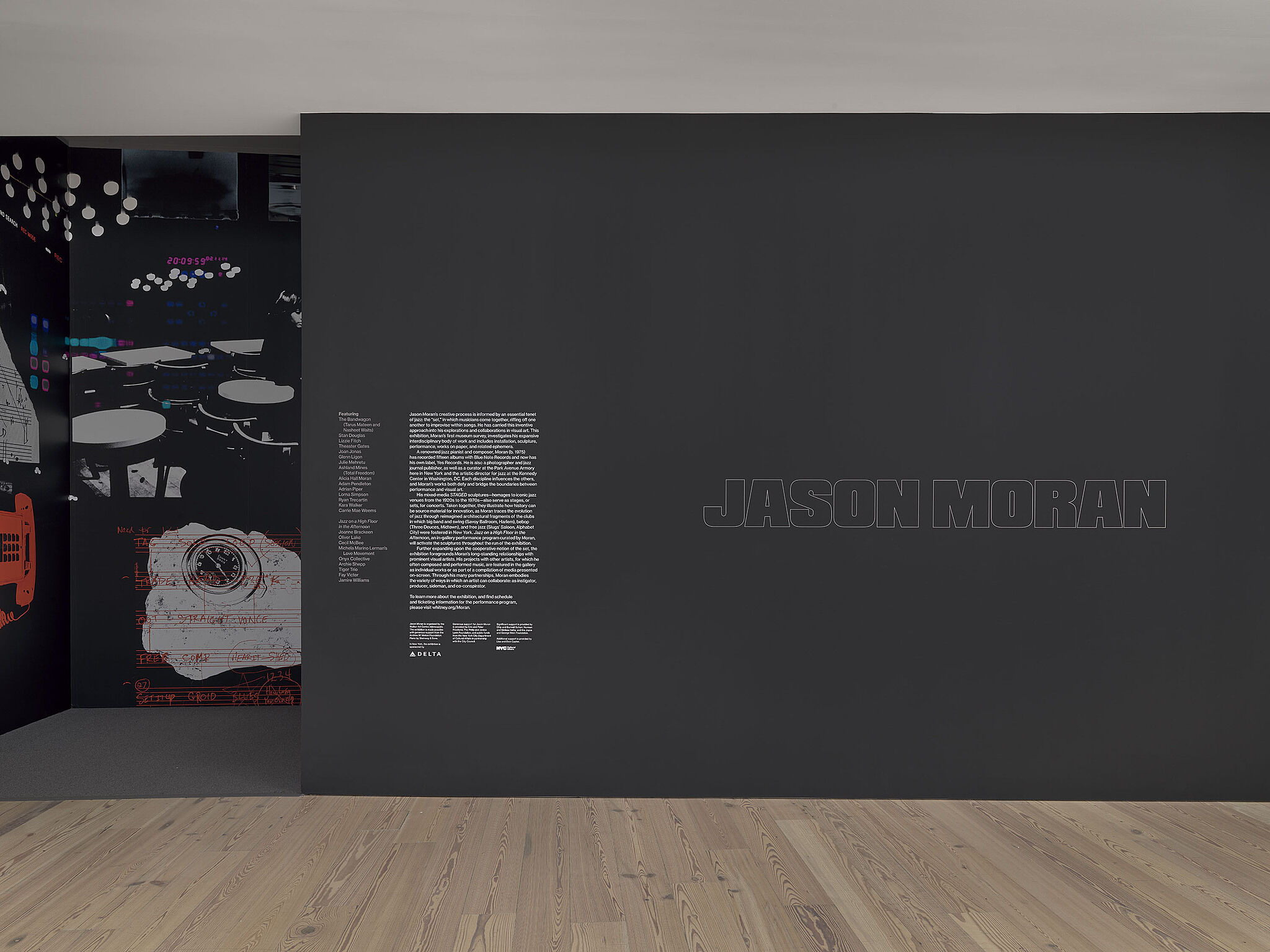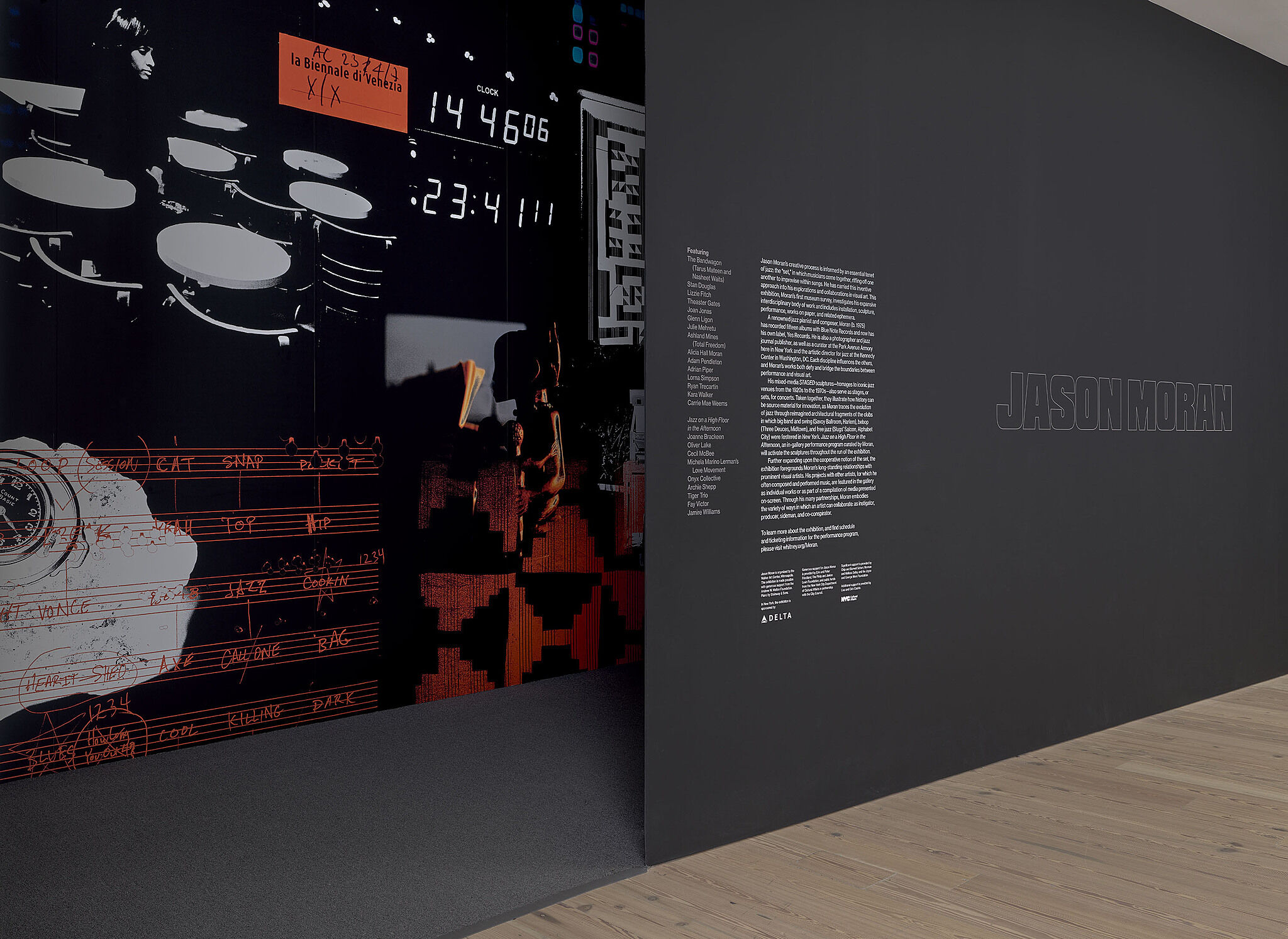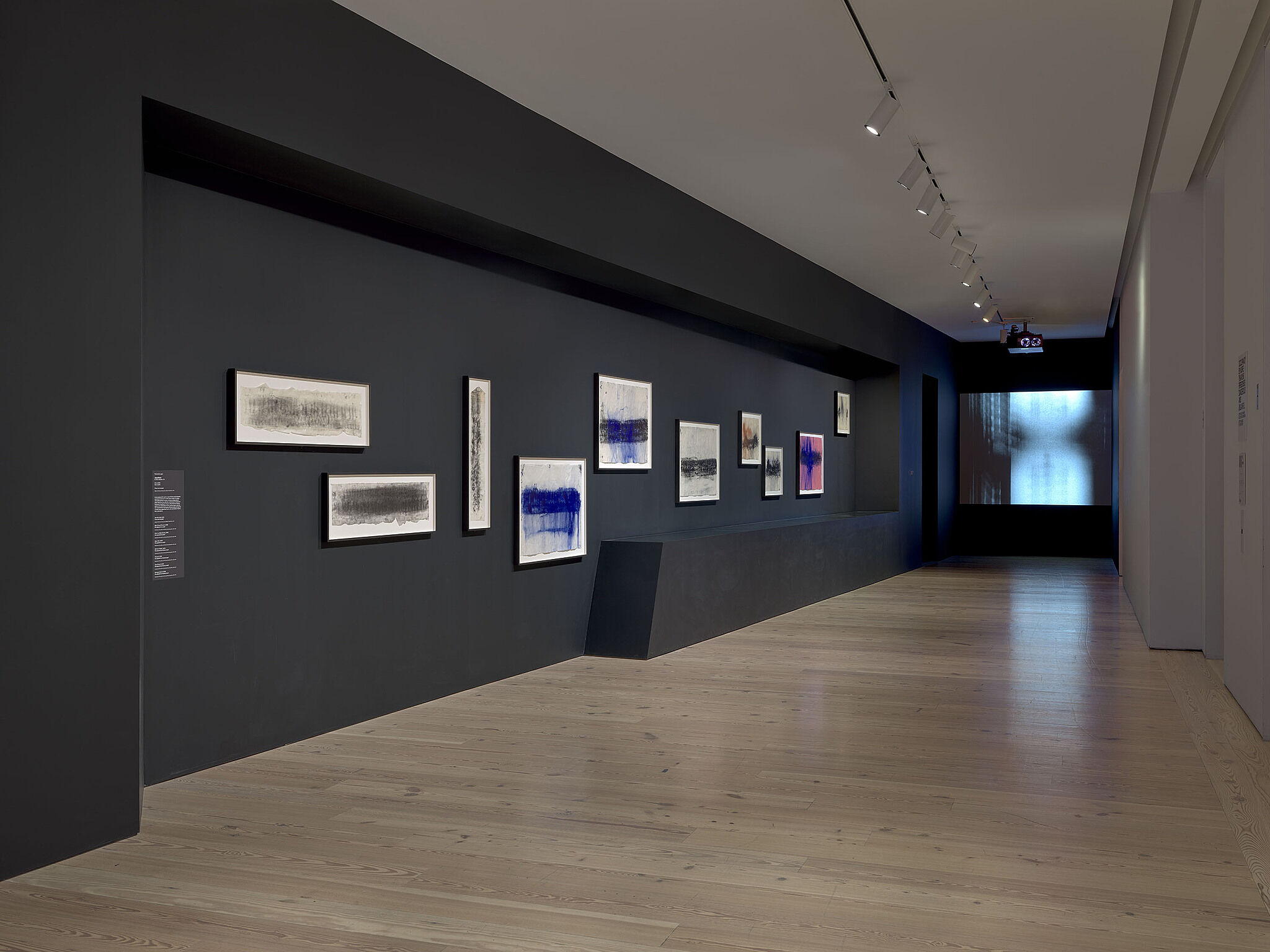Jason Moran
Sept 20, 2019–Jan 5, 2020
The boundary-bursting artist Jason Moran (b. 1975) grounds his practice in the composition of jazz, bridging the visual and performing arts through spellbinding stagecraft. Heralded as one of the country’s leading jazz innovators, Moran transmutes his personal experience of the world into dynamic musical compositions that challenge the formal conventions of the medium. His experimental approach to art-making embraces the intersection of objects and sound, pushing beyond the traditional in ways that are inherently theatrical.
This exhibition—the artist’s first solo museum show—presents the range of work Moran has explored, from his own sculptures and drawings to collaborations with visual artists to performances. Among the many artists with whom Moran has collaborated are Joan Jonas, Kara Walker, Lorna Simpson, Glenn Ligon, Stan Douglas, Carrie Mae Weems, Adam Pendleton, Theaster Gates, Julie Mehretu, Ryan Trecartin, and Lizzie Fitch. Originating in Minneapolis at the Walker Art Center in the spring of 2018, the show has traveled to the ICA Boston and the Wexner Center before its final stop at the Whitney. This grand finale in Moran's hometown of New York City will feature many performances by renowned jazz musicians and new live adaptations of works made with his most significant artistic collaborators.
Jason Moran is organized by the Walker Art Center, and curated by Adrienne Edwards with Danielle A. Jackson. The Whitney’s presentation is overseen by Adrienne Edwards, the Engell Speyer Family Curator and Curator of Performance, with Clémence White, senior curatorial assistant.
The exhibition is made possible with the generous support of the Andrew W. Mellon Foundation. Piano by Steinway & Sons.
In New York, the exhibition is sponsored by

Generous support for Jason Moran is provided by Erin and Peter Friedland, The Philip and Janice Levin Foundation, and public funds from the New York City Department of Cultural Affairs in partnership with the City Council.
Significant support is provided by Chip and Burwell Schorr, Norman and Melissa Selby, and the Joyce and George Wein Foundation.
Additional support is provided by Lisa and Dick Cashin.

Collaborations
4
Collaboration has been central to Moran’s experiments, and among the many artists with whom he has collaborated include The Bandwagon (Tarus Mateen and Nasheet Waits), Stan Douglas, Lizzie Fitch, Theaster Gates, Joan Jonas, Glenn Ligon, Julie Mehretu, Ashland Mines (Total Freedom), Alicia Hall Moran, Adam Pendleton, Adrian Piper, Lorna Simpson, Ryan Trecartin, Kara Walker, and Carrie Mae Weems.
Glenn Ligon
Death of Tom, 2008
Artist Glenn Ligon critically investigates the legacies of painting and conceptual art as well as language and identity. For The Death of Tom, his first foray into filmmaking, Ligon set out to re-create a scene from a 1903 silent film adaptation of Uncle Tom’s Cabin (1852), the abolitionist novel by Harriet Beecher Stowe. In the 1903 movie, white actors performed the principal roles in blackface. During his project, Ligon discovered that his camera had not been properly loaded with film, resulting in what he describes as “blurry, fluttery, burnt-out black- and-white images, all light and shadows.” Viewing the ghostly footage, the artist realized that only abstraction could address the history and enduring repercussions of America’s structural racism.
Ligon, who knew the original silent film was accompanied by piano, invited Jason Moran to improvise a score. Ligon suggested as a starting point the vaudeville song “Nobody” (1905). Moran homed in on Ligon’s haunting moving images and played, as he describes it, “to the shadows.”
Mobile guides
Find sound descriptions and transcripts of works with sound in this exhibition.
Explore works from this exhibition
in the Whitney's collection
View 2 works
In the News
“There’s a sense of movement and evocative purpose to everything [Jason Moran] does.” —Observer
“Jason Moran’s Jazz Journey at the Whitney Upends Space and Time” —The New York Times

